

11 Best Single Handed Bluewater Sailboats

Sharing is caring!
We know that you’re serious about sailing when you finally think of venturing to the ocean. Who can resist dreaming of solo sailing through the Atlantic? This is an adventure to prove your advanced skills, strength, and experience.
But before going off on your ocean adventure, you need to plan and prepare . We cannot stress enough the importance of good equipment. There is a lot of sailboat types and models in the market and we want to help you choose the best one for your needs.
Do you know what hull, rigging, and keel types you will need? What’s the best material and model for you to buy?
We will guide you through important sailboat features needed for the cruise. Follow this review until the end and we will share the 11 best single-handed blue water sailboats for your solo ocean sailing!
What Size Sailboat Is Best for Single-Handed Sailing
What type of hull handles rough water the best, sailboat keel types for blue water sailing, keel or decked stepped mast, sloop or ketch, how many spreaders, cutter rig, self steering gear, furling sails, westsail 32, albin vega 27, pacific seacraft 34, canadian sailcraft 36 traditional, hallberg rassy 352, contessa 32, fast passage 39.
If you are planning to manage your boat single-handedly, then size is an important factor to consider. It can affect the size of your accommodation, and maybe the boat’s design for speed and power.
Being alone, you need to have a clear overview of what is happening on your boat. This is especially important when maneuvering or for docking operations.
Experienced sailors can handle a 60-foot sailboat but novices would find it difficult with its steep learning curve . Check out the Vendee Globe if you don’t believe me. In general, a good sailboat size for single-handed sailing would range from 25 to 40 feet.
We recommend sailboats with sizes under 40 feet. These have good displacement and are great when against bad weather. They are solo-friendly and simply the most manageable.
But in the end, choosing a suitable size depends on your experience and preference. You need to consider your overall health, age, and physique. Make sure to have a complete understanding of your sailboat before going on your journey to prevent accidents.
The hull or the main body of your boat comes in varying shapes and sizes. Each different type of hull is designed for specific purposes.
When venturing the blue waters, you need to have a hull design that could handle rough waters easily. The hull shape determines the performance of your sailboat and therefore, should align with your strengths and skills.
Today, the most popular design would be the heavy displacement hull . This design is intended for ocean cruising and longer sailing travels.
It has great stability and performs better the deeper the draft is. With this design, you would expect a slow and steady motion during your sea travels with minimal effort.
V-type hulls, on the other hand, are designed to plane or ride on top of the water. You can usually see these types of hulls on powerboats. The V-type hull usually has a bigger engine and best when dealing with choppy waters while moving at high speed.
Narrow beams are also a great option for those who are looking for another ocean friendly feature . These are usually seen in traditional sailboats.
Canoe stern or the double are considered to be the best sterns for offshore sailing. They help cut through a following sea and really helps prevent the waves from pushing the stern over too much. It also has great buoyancy and balance that is perfect for bluewater cruising.
The best materials for hulls would be fiberglass, metal, and aluminum. These are durable and could last for decades if properly maintained.
Aluminum is lightweight and has resistance to corrosion and impervious to magnetism. Boats built with aluminum are fast, stable, and seaworthy.
Fiberglass hulls need less attention. Currently, boats are usually made of fiberglass as the material is easier for companies and also great for seakeeping and stability.
Metal like steel has high abrasion resistance. It helps retain the boat’s appearance but can be prone to rust and corrosion.

A keel is a fin-like blade found at the bottom of a sailboat. It supports the ballast and helps to control and steer the boat.
It is generally designed to stop the boat from getting blown sideways because of wind pressure. The full keel, modified full keel, fin skeg, and fin spade rudder are all suited for bluewater sailing.
A full keel runs along the full length of the boat – from the bow to the stern – which makes it the most stable in the water. It carries the vessel well and is the safest to use when grounding as it reduces the chances of damage.
This is most ideal when cruising and the most comfortable out of the four keel types with its minimal heel. Although the slowest on the list, it has great directional stability and steering capability.
An improved version is the modified full keel . It is a hybrid with improved windward performance and better heel reduction than the full keel. However, it made small concessions on its stability and comfort.
Meanwhile, the fin keel with skeg rudder has more strength and protection against damage and impact. It also has better mobility and steering capability.
This type has a faster speed and windward performance compared to the modified and full keel types. It is also more balanced, which is ideal for cruiser-racer types of sailboats.
Lastly, we have the fin with a spade rudder. This is the fastest type on the list but also the most vulnerable as the spade rudder greatly relies on the rudder stock. But if you want speed and great windward performance, then this type is the right one for you.
Sailboat Rigging Types
Rigging is the whole system of ropes, chains, and cables. It supports the sailboat mast and controls the sails’ orientation and degree of reefing.
There are two main groups of sailboat rigs, Deck Stepped and Keel Stepped. The main difference lies in the location of its mast step. Both are fine choices and the better rig would depend on your preference.
Just as its names suggests, you can find the mast stand on top of the deck with Deck Stepped and on the hull’s bottom with Keel stepped. This means that to reach the keel, the mast would need to pierce through the cabin.
Deck Stepped rigs have masts that are more flexible because of their contact points, and are easily adjustable for optimal performance. Keel Stepped rig is rigid and strong and offers slow and steady cruising.
Now let’s move on and talk about Slope rigged and Ketch rigged. Which is better?
A sloop rig is simple. It is composed of a mast with a jib and a mainsail. Ketch, on the other hand, is more complex with its two masts with any foresail, main and mizzen mast combinations.
If you are choosing between Sloop and Ketch rigged sailboats for solo sailing, then we recommend Sloop. Although, Ketch is manageable and can be easily used with less strength and effort. This is perfect for cruising as it can work around multiple sailing conditions.

In terms of spreaders, you can freely choose between a single or dual spreader. This deflects shrouds and supports the mast. We do recommend dual spreaders but single spreaders are also good.
It’s just that double spreaders give the rig more strength and better sail control.
The cutter rig is sometime referred to as an inner forestay or baby stay. Simplest way of describing it is that you have two head sails instead of just one. Gives you more options on sail configurations.
Single Person Sailboat Equipment and Gear
Your sailboat would not be complete without gear and equipment. You might want to invest in autopilot or wind vane, furling headsails, electric windlass, life jackets, and AIS to make your voyage much easier.
Wind Vane is an autopilot steering that you can use without electricity. It is usually placed on the back to catch the wind and respond to various wind conditions.
It automatically adjusts the rudders in response to the wind to alter the boat’s course. This is helpful because it’s like having another crew member on board you don’t have to listen to and feed.
Headsail furling or roller reefing is necessary for easier management of your headsails. It is important to have a functioning and updated roller furling system in order to reef, dowse, or stow the headsail efficiently.
Another item we would recommend is an electric windlass . You can choose one that works vertically or horizontally, depending on your needs. This will help you move the anchor effortlessly with a single button. Using the two windlasses that god gave you makes anchoring more difficult then it needs to be.
Life jackets are a must in every sailboat. Just be sure it fits you and that you know how to use it. Also, be sure to buy a coast guard approved product with a harness that could support your weight.
The Automatic Identification System (AIS) will help you avoid collisions . It is recommended to get a receiving and transmitting one when going solo sailing.
This way, you and the other boats with AIS within the radar area are alerted to each other’s speed, course, and direction.
Really, you won’t know what you might encounter in the ocean so you must always be prepared. We hope that these items will help you achieve a safer and more secure sailing experience.
11 Best Sailboats for Solo Sailing
Now, here are 11 sailboats that are best for solo sailing. Any of these vessels are guaranteed to take you safely and comfortably anywhere around the world.

This is a long full keel fiberglass sailboat that was built from 1971 to 1981. Its design was based on a previous model, Kendall 32, and has an amazing interior size geared for comfortable cruising.
W32 is widely noted for its seaworthiness. It is built with a strong and durable design and materials to resist extreme sea conditions.
It was used on various voyages and circumnavigations. Its hull is a heavy displacement and double-ender type designed for long periods of sailing.
It is also a cutter-rigged sailboat equipped with a single mast, forestaysail, mainsail, and jib. Its overall length including the bowsprit and boomkin is roughly 40 feet, which is perfect for sailing single-handedly.
Most people would note that the speed and acceleration of W32 are quite slow. This is due to its larger wetted area and sometimes newbies’ mistake of carrying too much on board.
With the right keel, sails, and rig configurations you can improve on W32’s speed and weaknesses. As seen from David King’s documented modifications, W32 proved to be safe, steady, and fast when sailing on blue waters.

Vega 27 is a modified full keel sailboat with a masthead sloop rig. It was designed around 1966 and became the most popular production sailboat in Scandinavia.
It has a unique look because of its reverse sheer commonly seen in smaller boats to increase the area of its interior. It is made with fiberglass, but has a narrower hull compared to similar sized boats in its class.
Its shallow hull has a large cutaway as seen with modified full keel designs. This can make her quite stiff, heeling to about 15 degrees when its shoulders are buried.
Still, it is great for single-handed sailing because of its manageability and balance under different conditions. You cannot help but admire its light helm and great tracking capability.
Vega’s light air performance is okay but it shines when the wind blows at 15 knots or more. It could even maintain its dryness even with rough waves and weather conditions.
The most comforting feature would be its control and stability at all times unlike other more modern vessels with spade rudders. Overall, it is safe and ideal for longer cruises offshore.

This 30-foot traditional sailboat could take you anywhere. Alberg is notable for its narrow beams, long overhangs, and full cutaway keel with its directly attached rudder.
It is strong and durable. Its materials were mostly aluminum, hand-laid fiberglass, and polyester resin. More ballasts were produced in later productions as the early ballast was built with iron as opposed to the original lead design.
Alberg is greatly influenced by folk boats in Scandinavia. It is built with fiberglass and has an interior with comfortable full standing headroom and a well-vented galley.
This classic design from 1962 is ideal to cross oceans and is used for various circumnavigations. Alberg is a stable and seaworthy boat that could even be used in casual racing. Its best point of sail seems to be a beam reach and close reach.
It is praiseworthy when crossing oceans. Unlike modern designs that tend to be thrown around on rough seas, Alberg’s narrow beam design slices through big and rough waves and moves quickly. Under extreme weather conditions, it could perform heaving-to and lying-a-hull with no problems.
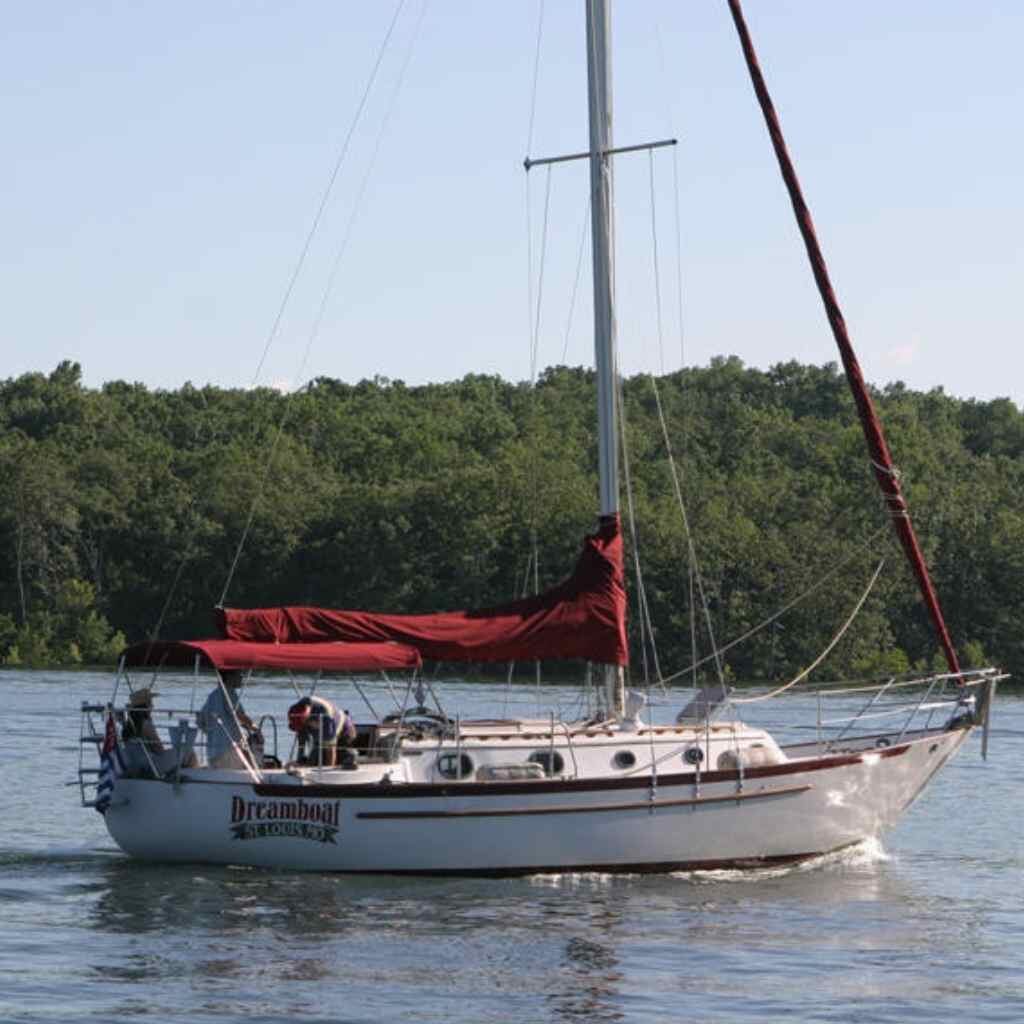
Pacific Seacraft 34 is a smaller heavy displacement semi-long keel sailboat based on the highly successful Crealock 37. It has the same graceful lines and appearance as the Crealock and is known as the Voyagemaker.
It is built with comfort and safety in mind with its large overhanging bow and beautiful sheer line ending with a traditional canoe stern. Constructed with the highest standard, it is a seaworthy sailboat that is ideal for bluewater voyages.
It is a cutter-rigged sailboat with skeg-hung rudders and control lines being fed back to its cockpit. The smaller cockpit may feel cramped but its design lowers the risk of flooding.
Still, it has a great interior suited for living aboard. It has a large headroom, comfortable galley, and up to five berths for comfortable cruising.
Although you may feel some hobby-horsing windward because of the overhangs, Seacraft 34 is overall a very balanced boat with great upwind performance. It has outstanding control capabilities and is able to sustain surfing speed with ease.

This is a double-ended full keel cruiser designed by Bob Perry and built-in Taiwan in response to the rising popularity of Westsail 32. It was offered to the market as a semi-custom boat and built with high-quality materials.
You can modify the internal layout and can choose a ketch, cutter, or pilothouse version. There is an option to use wood or aluminum spars. The mast could also be keel-stepped or deck-stepped.
Before, only 20 were ketch sailboats due to the popularity of the cutter design at that time. Now, ketch has proven to be faster and more balanced between the two.
Tayana is relatively faster than any sailboat in its class. Its best point of sail is in its broad reach. It also tracks well windward, and is an ideal choice for the trades. It is also great how the cockpit is secured from any flooding even when traveling.
Today, a lot of people are still actively sailing this. Tayana 37 has become well known for offshore and blue water sailing.

Canadian Seacraft is well known for its fiberglass racer and cruiser. CS 36 is a small traditional fin keel sailboat with a masthead sloop intended for recreational use. It is seaworthy and has good performance in different weather conditions.
It was designed by Raymond Wall and had a production run between 1978 to 1987. It remains to be popular in both north and south borders.
It is a beautiful sailboat with a graceful sheer line and balanced overhangs at both bow and stern. Its details and quality in design and production are clearly of a higher tier.
It is mostly built with fiberglass and balsa wood. It is equipped with an internally mounted spade transom hung rudder. All of its lines lead to the cockpit, which is ideal for single-handed sailing.
CS 36 Traditional also has a deep-depth draft and wide beams with great access to the cockpit and foredecks. It is wide and spacious, which is perfect for comfortable cruising.
The sailboat has great proportion and traditional aesthetics. It is simple and straightforward, which makes it ideal for bluewater sailing.

This is a sturdy and high-quality sailboat built between 1978 to 1991. It features a progressive design, combining a walk through with the aft-cabin from the main saloon. It is made with a tall and standard rig each supported on double and single spreaders, respectively.
Hallberg Rassy 352 has a nicely balanced hull sporting a fin keel with rudder on skeg, a generous beam, and a 45 percent high ballast ratio. Its water and fuel tanks are placed low in the keel to improve sail carrying ability.
Its production spanning 14 years allowed for continuous improvements in its specifications. Newer sailboats have raised hulls for bigger headroom in the under the deck, aft cabins, and the walkthrough. Engines were also replaced by a Volvo and later a Penta Turbo or the bigger MD 22.
It is impressive how they balanced good interior and sailing performance. It has great seakeeping ability and smooth motion in heavy seas, easily an ideal sailboat for singlehanded sailing.

Corbin 39 was designed based on a Dufour design named Harmonie, increasing freeboard, and flushing the deck. Its style is influenced by the classic Scandinavian cruiser, Westsail 32.
It has a long fin keel, blunt bow, and a high freeboard. It was sold as kits, and various deck molds were produced. They have pilot, aft, and center cockpit variations.
It was made of sturdy and high-quality materials. The earlier version’s decks were of marine grade mahogany but it was later changed with Airex foam. Its lead ballast was encapsulated with fiberglass for added protection.
Earlier boats had a single spreader main or a turbocharged double spreader. Later, Corbin used 49 feet double spreader rigs instead, and all were deck-stepped.
Corbin 39 is truly a strong and seaworthy vessel. With its fin keel and skeg rudder, cutter rig, and reefed main combinations, it could take anyone safely and comfortably anywhere in the world.

Valiant 40 took its looks from Scandinavian double-ender sailboats. It had a successful production run that spanned for 47 years. It proved to be one of the pioneers for modern blue water designs.
Its hull is made from thick hand-laid fiberglass, bolted and covered with teak. Its ballast is cast with lead bolted to the keel stub. Lastly, the skeg is constructed separately from hull molding and encased with fiberglass before being fastened to the hull.
It has a beautiful bow and sheer lines and a longer LWL for maximum speed. At the back are a non-spacious cockpit and a canoe stern ideal for bluewater sailing operations.
Under the waterline is a fin keel with its skeg hung rudder. It perfectly matches with the cruising hall above, minimizing wetted surface area
Overall, Valiant 40 is a seaworthy vessel with great blue water performance. Extremely balanced and well-mannered, it can withstand extreme weather conditions with ease and minimal effort on your part.
It soon gained a reputation as a fast water passage-maker with high integrity. Now, it is regularly used for circumnavigations by solo sailors and voyagers.

If you like a sailboat with a proven track record, then Contessa 32 is for you. It is a seaworthy racer-cruiser with good all-around sailing capabilities released in 1971.
Like its younger sister, Contessa 26, it has great speed, integrity, and affordability . Contessa 32 is a definite combination of old and new with its traditional narrow beam, a full hull with a fin keel, and fiberglass rudder protected by a skeg found in more modern yachts.
It has marked overhangs and a narrow tuck-up stern. It has less headroom below in return for its lesser wind resistance.
This configuration delivers fast racing speed and great stability. It could definitely withstand extreme weather and rough waves. Contessa 32 is claimed to be able to right itself when rolled or capsized.
Contessa 32 is known for its forgiving nature. It has a responsive helm and excellent windward performance. With its astounding stability, it can carry full sail for up to 25 knots.

Fast Passage 39 was designed by William Garden and is said to be a legendary cruiser with speed, ruggedness, and fame. It is a stout double-ender comparable to the Valiant 40.
It has the same LOA and LWL as Valiant and also has nearly identical ballast and displacement. The difference is its narrower frame and more evolved underwater shapes resulting in flatter forward and aft keel sections and less wetted area. It also has great directional stability as its rudder allows great control under wind vane and down steep waves.
It is a high performing sailboat but also difficult to find as only 41 were produced. A part of the group was offered as hull and deck kits intended to be finished by the sailboat owners.
Fast Passage 39 also has a proven track record and has won single-handed blue water races. It performs great under a wide range of conditions, especially in light winds.
By now you should have some idea what makes a vessel Bluewater friendly. There are hundreds of vessels that can make long distance voyage safe and enjoyable. These examples above are just a few examples of the Best Single Handed BlueWater Sailboats.
Leave a Comment Cancel Reply
Your email address will not be published. Required fields are marked *
Save my name, email, and website in this browser for the next time I comment.
Get your "Sailing and Boating" Free Guide
- Skip to primary navigation
- Skip to main content
- Skip to primary sidebar
- Skip to footer
Yacht Cruising Lifestyle
Everything fun you can do from your yacht
20 Bluewater Cruising Sailboats Under $100,000
January 5, 2021 by Travis Turgeon 2 Comments
Choosing the right bluewater yacht for your needs requires a ton of research. With so many designs and features available, it can be overwhelming trying to narrow down your options. The process gets even more complicated when you begin to consider the personal opinions of other sailors.
So how do you know where to start? Every person’s definition of comfortability will vary when it comes to onboard living. What suits a family of four won’t necessarily suit a couple or a single-handed sailor. Your budget, style, and needs are all unique to you and your situation, so it’s essential to know just what to look for when buying a new or used vessel .
To start you off in the right direction, we put together a list of our top choices for bluewater cruising yachts under $100,000.
Allied Princess 36
Built as a long-keel ketch or cutter, the Allied Princess 36 was in production from 1972 to 1982. Around 140 vessels were manufactured in total, so you can occasionally find them on the used market.
While these cruisers’ design and construction are considered sufficient, the excessive use of fiberglass makes the design a bit bland. Although they may not have the most appealing design, these bluewater yachts certainly tick a lot of boxes.
With the full-keel measuring just four-foot six inches, it’s a design that holds steady on its course without pointing as high as a fin-keel design.
Overall, the Allied Princess 36 is a wonderful option for bluewater sailing.
Prices range between $30,000 and $60,000.
Cabo Rico 38
The Cabo Rico 38 is at the top of its class, constructed with a long-keel cutter rig design that gives it outstanding bluewater capabilities for its price point. The vessel was produced in two models – Pilothouse, and Trunk Cabin – although the Pilothouse design is less common.
Cabo Rico i s consistently successful with it s 38 models, and t hey remain one of the most prominent cruising boats on the water.
Internally, this boat has various features required for a bluewater cruiser: Large water and fuel tanks, a solid design with balsa wood cores for thermal and noise insulation, and an overall seaworthy design.
While this boat wasn’t m eant to win races, it is a fantastic choice for a crui sing vessel.
Prices range between $30,000 and $80,000.
Celestial 48
The Celestial 48 is the largest boat on our list and is commonly sought after by the cruising fraternity. The problem is, these vessels are scarce on the used market.
The Celestial 48 is a ketch rig with a shoal-draft, fin-keel design, and a center-cockpit configuration that is comfortable and ideal for bluewater sailing. One of our favorite features is the six-foot, two-inch headroom in the cabin, along with high-capacity water and fuel tanks.
The Celestial 48 was built in China by the Xiamen boatyard, although it’s no longer in production.
If you can find one, the Celestial 48 will make an excellent bluewater cruiser.
Prices start near our $100,000 mark.
The Corbin 39 is manufactured in two designs, aft or center cockpit. Designed and built in Canada by Robert Dufour and Marius Corbin, the 39 is now (sadly) out of production. This cruiser remains a favorite of many and is still commonly searched for on the used market.
One thing to note is that most of the boats were sold as unfinished kits, leaving owners to complete the interiors themselves. For this reason, the standard of interior design finish will vary, so it’s worth checking and comparing with other vessels carefully.
When found, the Corbin 39’s present a very reasonable price tag, but a full survey is essential.
Prices range between $40,000 and $60,000.
The Freedom 36 is one of the smaller yachts on our list, but it has an exciting design that attracts cruisers. The wide beam and long waterline design allow for a much larger interior than most other boats of similar length. As a cruiser, space is a top priority, so this cruiser should be on your list of considerations.
A unique feature of this Freedom yacht is the stayless carbon fiber mast. It looks a little odd for most, with no forestay or backstay and a mast that flexes alarmingly in the wind. It’s a proven design, though, and gives clean lines just like an aircraft wing.
The Freedom 36 is certainly an exciting cruiser to keep an eye on.
Prices range between $40,000 and $80,000.
Gulfstar 44
Known as a capable cruiser or live-aboard boat, the Gulfstar 44 is a spacious yacht that can take you around the world.
Designed with a fin-keel and skeg-rudder, the Gulfstar is comfortable and well built.
Internally, you’ll find a large galley, king-size aft cabin, and spacious fore cabin, with ample room in the saloon. Earlier Gulfstar vessels suffered from inconsistent build quality, but from around 1976 onwards, the company made huge improvements.
For a spacious bluewater sailboat with excellent heavy-weather handling characteristics, the Gulfstar 44 is a great choice.
Prices start around $60,000.
Hans Christian 38
If you’re considering cruising the world in a bluewater yacht, then the Hans Christian 38-T should be added to your shortlist of candidates.
With a full-length keel design and laden with solid teak, this boat weighs in at 12.5 tons, making it a heavy displacement vessel that you can rely on to take you through some of the harshest conditions.
Manufactured in Taiwan, these cruisers can be a chore to acquire. One of the most common downfalls of the Hans 38-T is electrical problems, so be sure to get the wiring checked out by a professional.
Outside of electrical issues, this boat is a proven winner in the cruising world.
Prices start around $70,000 but expect to pay well over $100,000 for the more admirable models.
Hinckley Bermuda 40
The Hinckley Bermuda 40 was in production for over 30 years, from 1959 until 1991, but only 203 boats were manufactured in total. Many Bermuda 40s were used as racing vessels throughout their production, winning the Northern Ocean Racing Trophy in 1964.
The design also gained many admirers in the cruising world thanks to the long keel and centerboard, which allows the boat to maneuver through shallow waters. The Hinckley Bermuda 40 is hard to beat for versatility, combining classic looks with the shallow draught and generous interior space.
Early models from the 60s and 70s start around $80,000, but later models land well above our $100,000 threshold.
Island Packet 35
Although only in production for six years, 178 Island Packet 35s made their way onto the market. These vessels have become justifiably popular with coastal cruisers and bluewater sailors alike.
These cruisers are available in two designs; long-keel or long-keel with centerboard – both of which come with cutter rigging.
The design is conservative and built for comfort rather than speed. Inside space is very generous, with a 12-foot beam, a v-berth cabin in the forepeak, and a double cabin on the aft port side.
Island Packet 35’s appear on the used market regularly, so locating one shouldn’t be too much of a hassle.
Prices start at around $65,000.
The Niagara 35 is a popular cruiser available in two exciting models, each one coming with a fantastic interior design.
The original model features a center galley and marine toilet that separates the fore and aft areas. The saloon is completely closed off, making it useful during extended passage journeys.
The later model has a double-berth forward, separated from the saloon by the head and shower. Both models include a spacious cockpit design. Through its 12 years of production, 260 Niagara 35’s went on the market – so you can regularly find them for sale.
Early models start around $30,000, with later models coming in closer to $70,000.
Only 32 of the Robert Perry-designed Nordic 40s went through production, making them exclusive and difficult to find. If you do manage to get your hands on one, however, you won’t be disappointed.
The fin-keel and skeg-mounted rudder design allow for up to six people to stay comfortably, including extra storage space for luggage and provisions.
The Perry design is recognized for the quality of its fittings, including rod-rigging and full hull insulation on early models. After 1987, they cut back on a few design features, but it’s still a quality boat.
If you can manage to find a Nordic 40, it will make an excellent investment.
While it may be rare to find one below our $100,000 mark, it is possible.
Passport 40
Built in Taiwan, the Passport 40 is another excellent design by Robert Perry. Sporting a fin-keel and a skeg-mounted rudder, the design is known for its well-balanced performance.
Originally supplied with a sloop-rig, the majority have an inner stay, fitted to allow a double headsail. This cutter-style rig makes the Passport 40 even more suitable for ocean crossings.
The interiors are well designed – as you’d expect from a Robert Perry – and make for comfortable living during long passages.
Peterson 44
The Peterson 44 was designed and built as a performance cruiser, combining sufficient speed and sea-kindly handling.
A low center-cockpit, 10,000 pounds of lead ballast, and a long fin keel allow this vessel to take turbulent conditions in stride without sacrificing the crew’s comfort.
Internally, there is plenty of space in the well-designed cabin. For long passages, there’s a 132-gallon water tank and a 117-gallon fuel tank.
Finding a Peterson 44 may be your only problem. They manufactured about 200 boats, but owners rarely like to part with them – adding to their intrigue and value.
Prices for these yachts vary widely. Expect to pick up an older model between $50,000 and $75,000.
Prout Snowgoose 37
As the only catamaran on our list, the Prout Snowgoose 37 is a proven boat for circumnavigation on the bluewater trail.
A standout feature of the early Snowgoose models is its narrow beam, which allows them to navigate canals easily. These boats are popular in Europe and are common on the journey between Spain and France on the Mediterranian. Additionally, the Prout Snowgoose 37 can fit into a single-hull marina, reducing berthing costs when compared to most other catamarans.
If you have never considered a catamaran in the past, the Prout Snowgoose 37 may change your mind.
Prices start near $45,000, with later models reaching over $100,000.
The Shannon 38 comes in two styles, with either an aft cockpit or pilothouse. Shannon Yachts are known for their build quality and attention to detail, and the 38 is no exception. The boat is available as either a ketch or cutter rig, but it’s renowned for its performance at sea in both forms.
Only 100 were built, with the final boat launched in 1988. If you can find one on the used market, it will make a competent bluewater cruiser.
Prices start at $40,000 for older models, with newer models inching closer to our $100,000 mark.
Only 80 of the Tartan 41s were manufactured, although they produced a similar Tartan 43 with the same molds. It is a fin keel design, with a skeg-mounted rudder and sloop-rigging. In its day, it was considered a fast cruiser, but now they’re mostly made for comfort.
If you’re looking at a Tartan 41, check out the keel dimensions. The keel was undersized on earlier models, which caused heavy-weather steering issues. The boatyard redesigned the later models, and some retrofitting has been done on the originals.
Prices start around $45,000 and reach upwards of $70,000.
No list of bluewater sailboats would be complete without the Tayana 37. It’s a beautiful boat designed by Robert Perry that comes in three variants; cutter, ketch, and pilothouse.
Built to compete against the popular Westsail 32, the 37 became a good seller – with almost 600 launched to date. Today, they are manufactured in limited numbers, as the traditional teak-heavy design is now less popular.
If you can find a good Tayana 37, cruising the oceans will be a pleasure in this sturdy and robust vessel.
Early models cost around $45,000, with newer or retrofitted models topping $75,000.
Another boat designed by Robert Perry, the Valiant 40 is one of the most sought-after bluewater cruisers on the used market. By the end of production, two manufacturers were able to put out around 200 boats, so it’s certainly possible to get your hands on one.
With a fin keel, reasonably heavy displacement, and solid build, open ocean cruising is made comfortable in the Valiant 40.
The Valiant’s trademark is the canoe stern, something Perry has carried over into many of his designs. The boat’s performance sets it apart from the more traditional heavy-cruisers, and it still has many admirers.
Expect to pay upwards of $45,000 for an early Valiant, but well-maintained vessels will command much higher prices.
Wauquiez Pretorien 35
When the weather gets rough, most people prefer bigger, heavier cruisers. Small boats generally don’t perform as well in harsh conditions, but the Pretorien 35 is an exception.
Built to IOR specifications, it’s a short, wide-beam design, with a ballast in the keel that makes up half of the displacement. It may be disappointing in light winds, but as the breeze picks up, the Pretorien comes alive.
Wauquiez built boats are known for their quality finish, so you shouldn’t hold any doubts when buying a used Pretorien.
Prices start around $39,000.
Westsail 32
At just 32 feet, the Westsail might be a surprising inclusion on our list. However, the design has proven itself many times over and remains popular with many cruisers.
With a long keel, transom-mounted rudder, and heavy displacement, these are seaworthy yachts.
The flipside to this is that the performance can be underwhelming. The Westsails are known for being slow, safe boats that will get you wherever you need to go – making them perfect for leisurely cruising.
Over 800 vessels entered the market between 1971 and 1981, so there should be plenty available if you look hard enough. The other point to remember is that they sold them as owner-completion kits, so the internal fitments, in particular, will vary in quality.
With so many available, the prices remain reasonable – with an early Westsail 32 fetching around $29,000 and well-maintained older models coming in closer to $50,000.
Remember: When buying a bluewater cruising yacht for less than $100,000, compromise is inevitable.
If you’re looking for a seaworthy, heavy-displacement design, you’ll have to compromise on the boat’s age. Choosing a modern, light design will allow you more for your money.
The best advice for buying a boat is to be truly honest with yourself by defining your needs and separating them from your desires.
Want to join the community at #BoatLife? Get a conversation started on our new forum by leaving a question or comment!
If you found this article helpful, please leave a comment below, share it on social media, and subscribe to our email list.
For direct questions and comments, shoot me an email at [email protected]
Sharing is caring!
Reader Interactions
November 15, 2021 at 6:30 pm
You guys didn’t mention Cape dory or pacific seacraft. How long have you been sailing?
February 18, 2022 at 1:37 pm
Very nicely done. There will always be people who disagree with your list but they reserve the right to comment without creating any value which is what you provided. Thanks for putting this together.
Leave a Reply Cancel reply
Your email address will not be published. Required fields are marked *
Save my name, email, and website in this browser for the next time I comment.
MB #20512 PO BOX 480 Sevenoaks Kent TN13 9JY
Tel: +44 56 0386 9163
Keep In Touch
Thank you for reading.
Join our online crew and find more about the #boatlife

Home » Blog » Bluewater sailboats » The best bluewater sailboats under 40 feet (we analyzed 2,000 boats to find out)
The best bluewater sailboats under 40 feet (we analyzed 2,000 boats to find out)
By Author Fiona McGlynn
Posted on Last updated: August 17, 2023
What are the best bluewater sailboats under 40 feet?
Last year we analyzed 2,000 offshore designs to bring you a list of the most popular bluewater sailboats .
However, most people are searching for a boat in a particular size class. So, we decided to do a double-click and look at the best sailboats under 40 feet for offshore sailing.
If you’re interested in an even smaller boat, there are plenty of great options under 30 feet in our list of the best small sailboats for sailing around the world .
The characteristics that make a sailboat a bluewater sailboat are a hotly debated topic, so we wanted to use real-world data and find out what cruisers are using to cross oceans and sail around the world.
We looked at 2,000 boats that entered the Pacific Puddle Jump (PPJ) over the last 12 years. For those of you who aren’t familiar with the PPJ, it’s a rally that crosses the Pacific ocean. We took part in 2017 and had a ball!
Also, if you’re looking to buy one of the bluewater boats on this list, you might want to check out our post on the best places to buy used boats and how to find free or cheap boats for sale .
Just be aware that a bluewater boat isn’t necessarily offshore-ready. Our top five picks are all older boats and will undoubtedly require work.
Every cruiser we know made substantial repairs and additions before going offshore: adding watermakers , life rafts, solar panels, and more.
Also, always have a boat inspected by a professional and accredited marine surveyor before buying it or taking it offshore.
So, without further preamble, here are the best bluewater sailboats under 40 feet.
The best bluewater sailboats under 40 feet
1. the westsail 32.
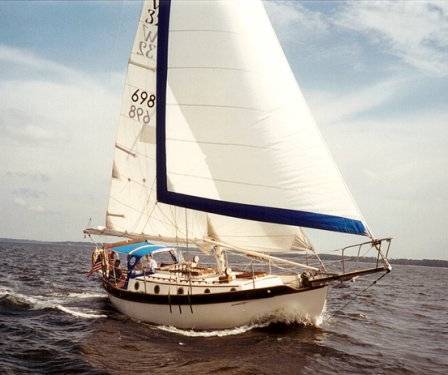
The Westsail 32 is one of the most iconic bluewater cruisers. Built by the Westsail Corporation in the 1970s, this plucky, small sailboat has developed a cult following over the decades. Since 2009, 19 have set out to cross the Pacific in the PPJ rallies.
The Westsail 32 is known for its sturdy construction, seaworthiness, and classic looks. In fact, it set the standard for what a real bluewater cruiser should look like. In 1973, the Westsail 32 was featured in Time magazine and inspired many Americans to go cruising.
Though popular, this boat has earned the unenviable nickname “ Wetsnail 32″, a reference to its poor ability to windward and sluggish performance. But Westsail 32 owners don’t care that they won’t be winning any races.
What the boat lacks in speed it makes up for in classic looks and excellent offshore cruising characteristics. Many owners have crossed oceans and circumnavigated the globe in their Westsail 32s.
2. Tayana 37
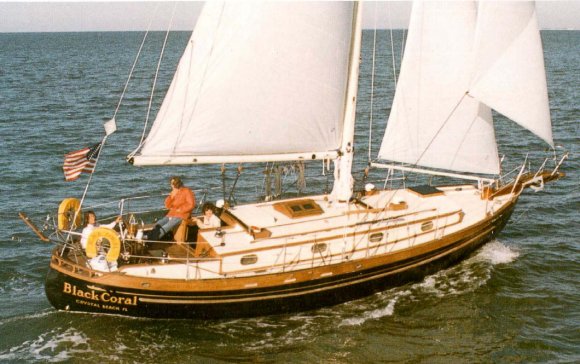
The Tayana 37 is a wildly popular Bob Perry design. It first rolled off the production line in 1976 and there are now several hundred of them sailing the world’s oceans.
Above the waterline, the Tayana 37 boasts beautiful traditional lines. However, Perry wanted to avoid the unenviable (read: sluggish) performance characteristics, associated with double-enders.
So, he designed the Tayana 37 with a cut-away long keel and moderate displacement, maintaining the classic look, while achieving reasonable performance.
The Tayana 37 has a devoted following of offshore enthusiasts. Since 2009, 12 Tayana 37s have set out to cross the Pacific in the PPJ rallies.
Read more about the Tayana 37 in this Practical Sailor review .
3. Hans Christian 38T
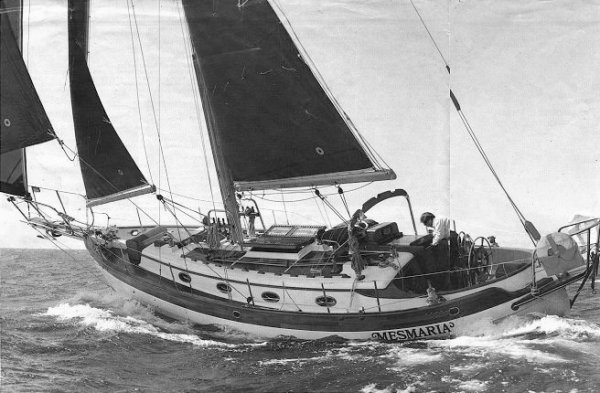
The Hans Christian 38T is a full-keeled, heavy displacement bluewater boat with a long bowsprit and a clipper bow, giving it a distinctive appearance. It was first introduced in 1976 and was produced until the early 1990s.
If you hadn’t already guessed, the “T” in the name stands for “Traditional”. Like many boats on this list, it takes a cue from Crealock’s famous Westsail 32 which sparked a craze in the 1970s and 80s for Scandinavian-style doubled-enders.
It’s gained a reputation as a capable and seaworthy cruising yacht. Many owners have crossed oceans and completed circumnavigations in Hans Christian 38Ts.
By our count, eight Hans Christian 38Ts have participated in Pacific Puddle Jump rallies over the last 12 years.
4. Island Packet 380
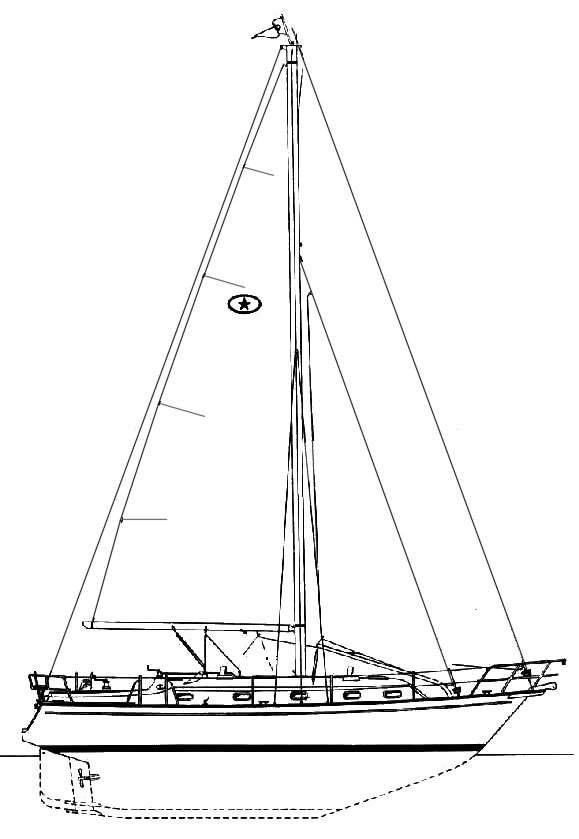
I’ve always considered Island Packets the Rolls-Royce of the bluewater boat world. Their distinctive cream-colored topsides make them easy to spot and their robust bluewater construction makes them the envy of many far-flung anchorages.
Designed by Bob Johnson and built by Island Packet Yachts in Florida, the Island Packet 380 was first introduced in 1998. 169 were built before 2004, over which time it gained a reputation as a capable and comfortable offshore cruiser.
Having been built in the ’90s and early 2000s, this is a relatively newer boat. In many ways, it offers the best of both worlds, a classic-looking boat with all the modern cruising conveniences.
The Island Packet 380 design prioritizes safety and stability. It also has several offshore features including standard twin bow rollers, a divided anchor locker, and ample storage for cruising gear.
Life below deck is comfortable too. With a 13-foot (4 meter) beam there’s plenty of room for liveaboard amenities.
The Island Packet 380 is a popular choice for long-distance cruising and offshore passages. Since 2009, six Island Packet 380s have set out to cross the Pacific in PPJ rallies.
Read more about the Island Packet 380 in this review by Yachting Monthly .
5. Ingrid 38
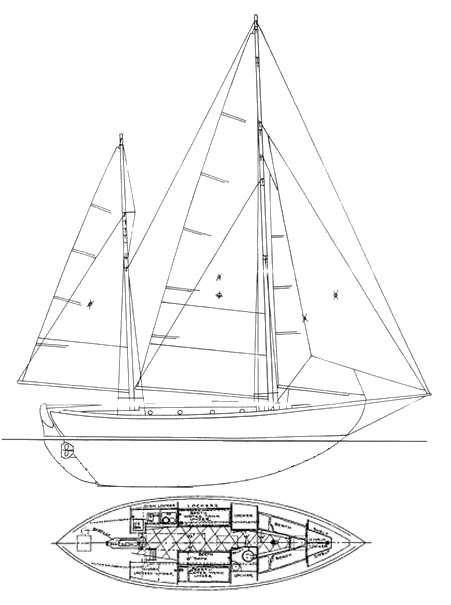
The Ingrid 38 is a double-ended sailboat that was originally designed for wood construction in 1938.
In 1971, Bluewater Boat Co. began building a fiberglass version. The design proved hugely popular and more than 140 were built.
With a full keep and heavy displacement, the Ingrid 38 epitomizes the traditional bluewater cruiser. Yet, it remains a well-loved design today. Since 2009, six Ingrid 38s have set out to cross the Pacific in PPJ rallies.
Description
Fiona McGlynn is an award-winning boating writer who created Waterborne as a place to learn about living aboard and traveling the world by sailboat. She has written for boating magazines including BoatUS, SAIL, Cruising World, and Good Old Boat. She’s also a contributing editor at Good Old Boat and BoatUS Magazine. In 2017, Fiona and her husband completed a 3-year, 13,000-mile voyage from Vancouver to Mexico to Australia on their 35-foot sailboat.
Terms and Conditions - Privacy Policy
17 Legendary Bluewater Sailboats Under 50 Feet (with Photos)
Bluewater sailboats have long been admired for their ability to handle the toughest conditions and take you on adventures across vast oceans. In our list, we'll introduce you to 17 legendary bluewater sailboats under 50 feet, from classic designs that have stood the test of time to modern innovations that have captured the hearts of sailors. These boats are known for their exceptional seaworthiness, comfort, and performance.
The legendary bluewater sailboats under 50 feet include Rustler 36, Tartan 37, Hallberg-Rassy 42F, Baba 30, Island Packet 38, Pacific Seacraft 37, Valiant 40, Najad 370, Moody 42, Halberg-Rassy 39, Sweden Yachts 45, Boreal 47, Amel Super Maramu, Outbound 44, Hylas 49, Malo 46, and Garcia Exploration 45.
These legendary sailboats have earned their reputation through excellent performance, durability, and comfort on long offshore journeys. When you choose the best bluewater sailboat to explore the open ocean, consider your personal sailing preferences. If you're looking for a budget-friendly boat, Baba 30 costs only $150,000.
- You can purchase these famous bluewater sailboats for $150,000 to $1.5 million.
- The length overall (LOA) of these boats ranges from 30 feet to 49 feet.
- When you choose a sailboat, consider its size, design, amenities and features, your budget, and your sailing purpose.
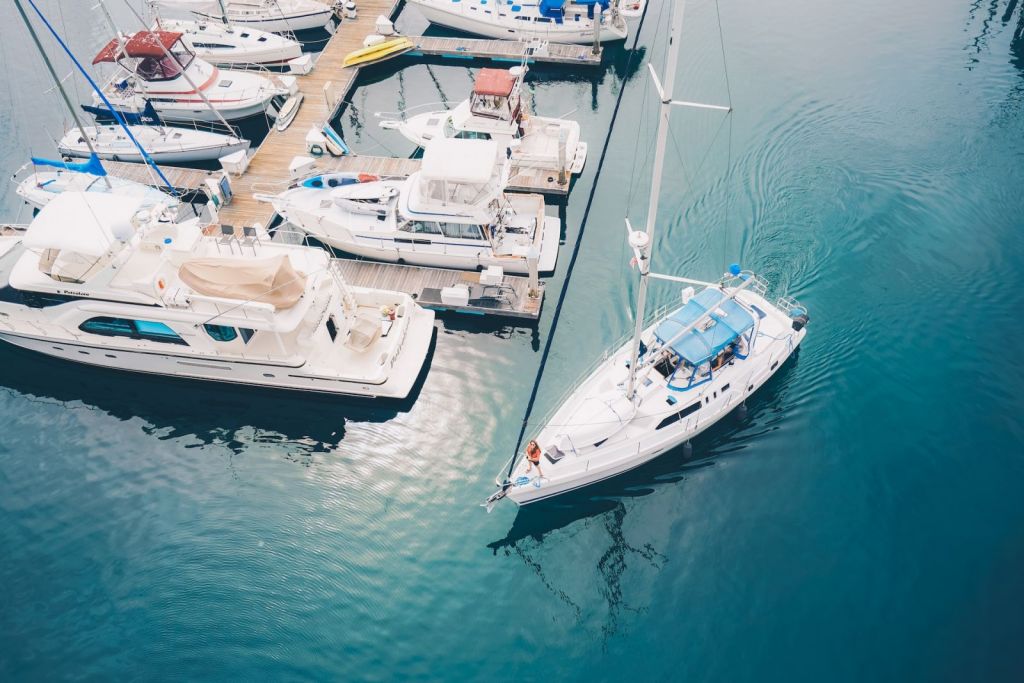
On this page:
Best bluewater sailboats under 50 feet, key features of bluewater sailboats, choosing your bluewater sailboat.
In this section, we will explore 17 of the most famous and best bluewater sailboats under 50 feet. These boats have earned their place in sailing history and are known for their exceptional performance, craftsmanship, and design.

The Rustler 36 is a classic long-keeled yacht designed for ocean cruising. With a sturdily built hull and excellent sailing performance, this boat is perfect for those looking for a reliable and timeless experience on the open seas.
Design and construction of Rustler 36
The Rustler 36 is a classic design that is known for its seaworthiness and durability. It is constructed with a solid fiberglass hull and a full keel. The deck is also made of fiberglass and is reinforced with a balsa core. The Rustler 36 is designed to be easy to handle and maintain, with a simple rig and a functional interior.
Creature comforts and functionality of Rustler 36
The Rustler 36 is a classic design that is known for its seaworthiness and durability. It features a comfortable interior with ample storage space, a galley, and a head. The cockpit is spacious and well-protected, with easy access to the deck. The Rustler 36 is designed for comfortable long-distance cruising, with features such as a windvane self-steering system and a cutter rig for versatility in sailing.
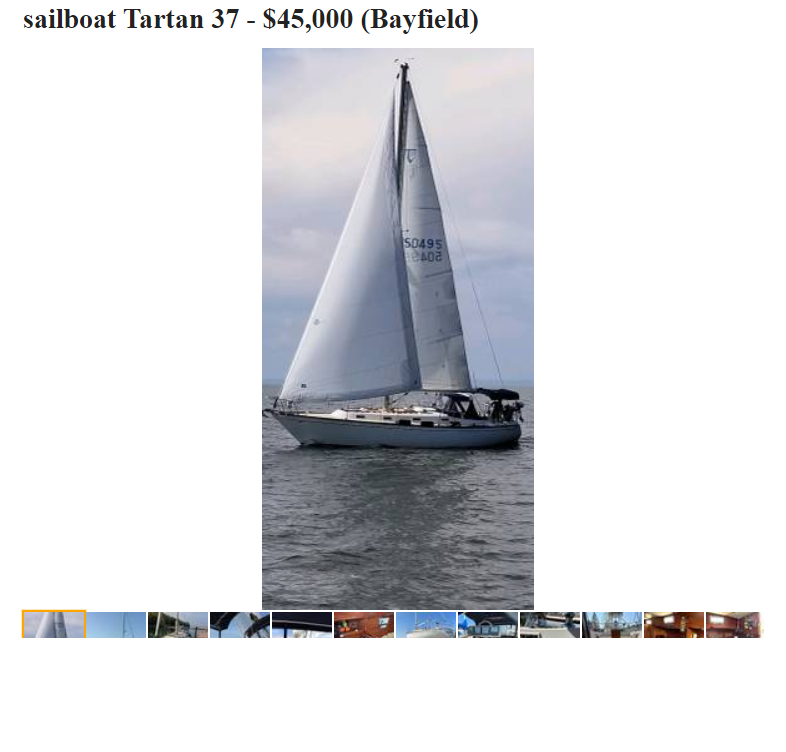
The Tartan 37 is a well-known sailboat for its balance of performance, comfort, and seaworthiness. Designed by Sparkman & Stephens, it is a versatile cruiser with a roomy layout, known for its durability and ease of handling.
Design and construction of Tartan 37
The Tartan 37 is a classic design that is known for its performance and comfort. It is constructed with a solid fiberglass hull and a fin keel. The deck is also made of fiberglass and is reinforced with a balsa core. The Tartan 37 is designed to be fast and easy to handle, with a spacious and comfortable interior.
Creature comforts and functionality of Tartan 37
The Tartan 37 is a classic design that is known for its performance and comfort. It features a spacious and well-appointed interior, with a galley, a head, and ample storage space. The cockpit is comfortable and well-protected, with easy access to the deck. The Tartan 37 is designed for comfortable long-distance cruising, with features such as a windvane self-steering system and a cutter rig for versatility in sailing.
If you're looking for the best bluewater sailboats under 40 feet , here are the top 13.
Hallberg-Rassy 42F
The Hallberg-Rassy 42F is a solidly constructed, luxurious sailing yacht that has gained a reputation for its exceptional build quality and cruising capabilities. This yacht offers incredible comfort and performance on long passages.
Design and construction of Hallberg-Rassy 42F
The Hallberg-Rassy 42F is a modern design that is known for its luxury and performance. It is constructed with a solid fiberglass hull and a fin keel. The deck is also made of fiberglass and is reinforced with a balsa core. The Hallberg-Rassy 42F is designed to be fast and easy to handle, with a luxurious and functional interior.
Creature comforts and functionality of Hallberg-Rassy 42F
The Hallberg-Rassy 42F is a modern design that is known for its luxury and performance. It features a spacious and comfortable interior, with a well-equipped galley, a head, and ample storage space. The cockpit is well-protected and comfortable, with easy access to the deck. The Hallberg-Rassy 42F is designed for comfortable long-distance cruising, with features such as a bow thruster and a cutter rig for versatility in sailing.

Designed by the famous naval architect Robert H. Perry, the Baba 30 is a tough, full-keeled cruiser with a spacious interior. Its solid construction and seakindly characteristics make it a popular choice for bluewater sailing.
Design and construction of Baba 30
The Baba 30 is a classic design that is known for its seaworthiness and durability. It is constructed with a solid fiberglass hull and a full keel. The deck is also made of fiberglass and is reinforced with a balsa core. The Baba 30 is designed to be easy to handle and maintain, with a simple rig and a functional interior.
Creature comforts and functionality of Baba 30
The Baba 30 is a classic design that is known for its seaworthiness and durability. It features a comfortable interior with ample storage space, a galley, and a head. The cockpit is spacious and well-protected, with easy access to the deck. The Baba 30 is designed for comfortable long-distance cruising, with features such as a windvane self-steering system and a cutter rig for versatility in sailing.
Island Packet 38
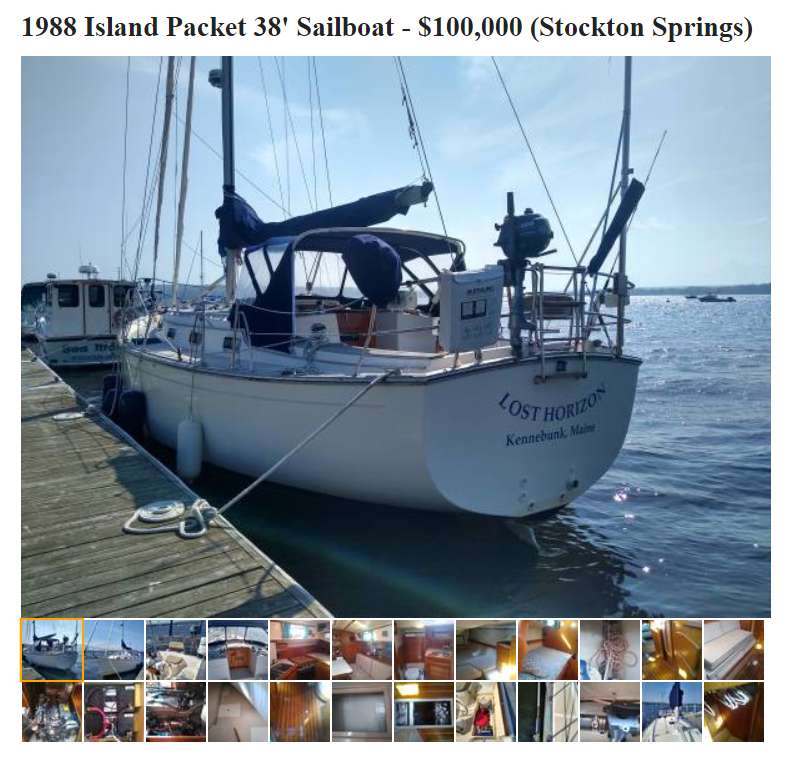
The Island Packet 38 is known for its sturdy construction and comfortable accommodations. With its full-foil keel and cutter rig, this boat offers exceptional stability and handling across a wide range of ocean conditions.
Design and construction of Island Packet 38
The Island Packet 38 is a modern design that is known for its comfort and performance. It is constructed with a solid fiberglass hull and a full keel. The deck is also made of fiberglass and is reinforced with a balsa core. The Island Packet 38 is designed to be easy to handle and maintain, with a spacious and comfortable interior.
Creature comforts and functionality of Island Packet 38
The Island Packet 38 is a modern design that is known for its comfort and performance. It features a spacious and well-appointed interior, with a galley, a head, and ample storage space. The cockpit is comfortable and well-protected, with easy access to the deck. The Island Packet 38 is designed for comfortable long-distance cruising, with features such as a bow thruster and a cutter rig for versatility in sailing.
Pacific Seacraft 37
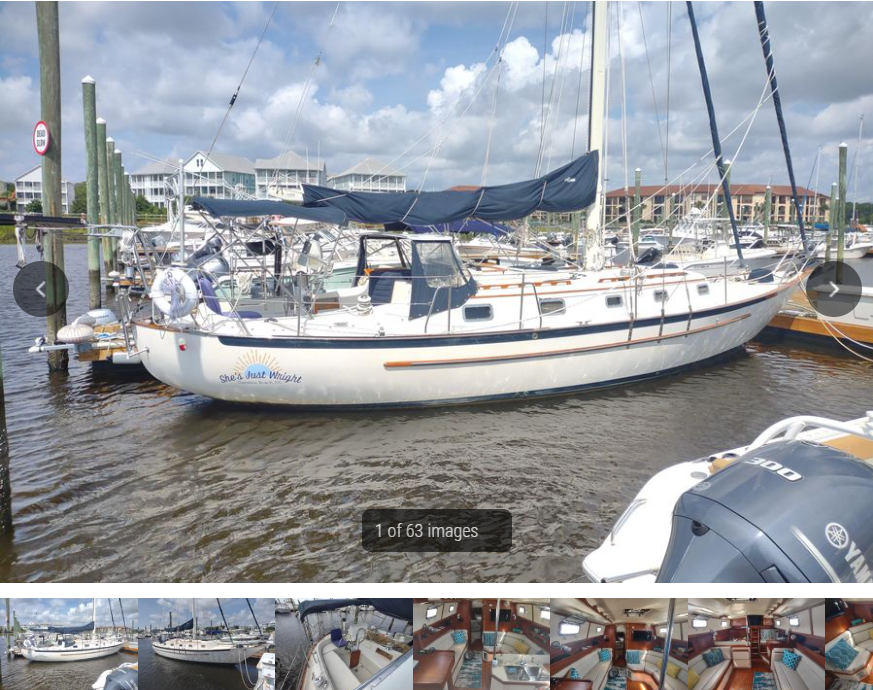
Designed by William Crealock, the Pacific Seacraft 37 is a well-built cruiser designed for offshore sailing. Its solid construction and traditional lines make it an enduring favorite among bluewater sailors.
Design and construction of Pacific Seacraft 37
The Pacific Seacraft 37 is a classic design that is known for its seaworthiness and durability. It is constructed with a solid fiberglass hull and a full keel. The deck is also made of fiberglass and is reinforced with a balsa core. The Pacific Seacraft 37 is designed to be easy to handle and maintain, with a simple rig and a functional interior. It also features a skeg-mounted rudder and a cutter rig for versatility in sailing.
Creature comforts and functionality of Pacific Seacraft 37
The Pacific Seacraft 37 is a classic design that is known for its seaworthiness and durability. It features a comfortable interior with ample storage space, a galley, and a head. The cockpit is spacious and well-protected, with easy access to the deck. The Pacific Seacraft 37 is designed for comfortable long-distance cruising, with features such as a windvane self-steering system and a cutter rig for versatility in sailing.
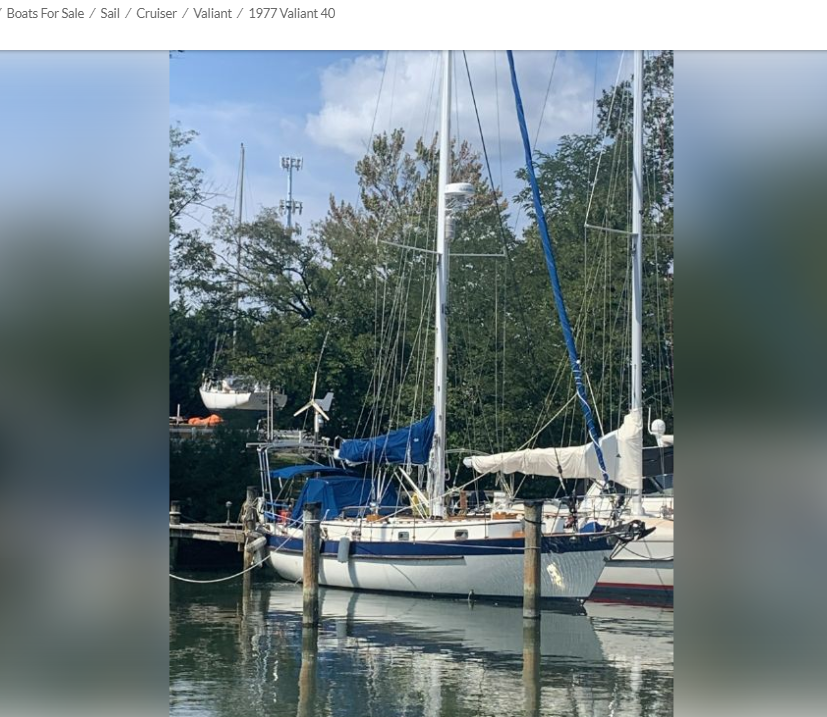
The Valiant 40, designed by Bob Perry, is a classic bluewater cruising sailboat. With a moderate-displacement hull, a powerful sail plan, and spacious accommodations, this boat has earned a reputation for seaworthiness and performance.
Design and construction of Valiant 40
The Valiant 40 is a classic design that is known for its seaworthiness and durability. It is constructed with a solid fiberglass hull and a fin keel. The deck is also made of fiberglass and is reinforced with a balsa core. The Valiant 40 is designed to be fast and easy to handle, with a spacious and comfortable interior. It also features a skeg-mounted rudder and a cutter rig for versatility in sailing.
Creature comforts and functionality of Valiant 40
The Valiant 40 is a classic design that is known for its seaworthiness and durability. It features a comfortable interior with ample storage space, a galley, and a head. The cockpit is spacious and well-protected, with easy access to the deck. The Valiant 40 is designed for comfortable long-distance cruising, with features such as a windvane self-steering system and a cutter rig for versatility in sailing.
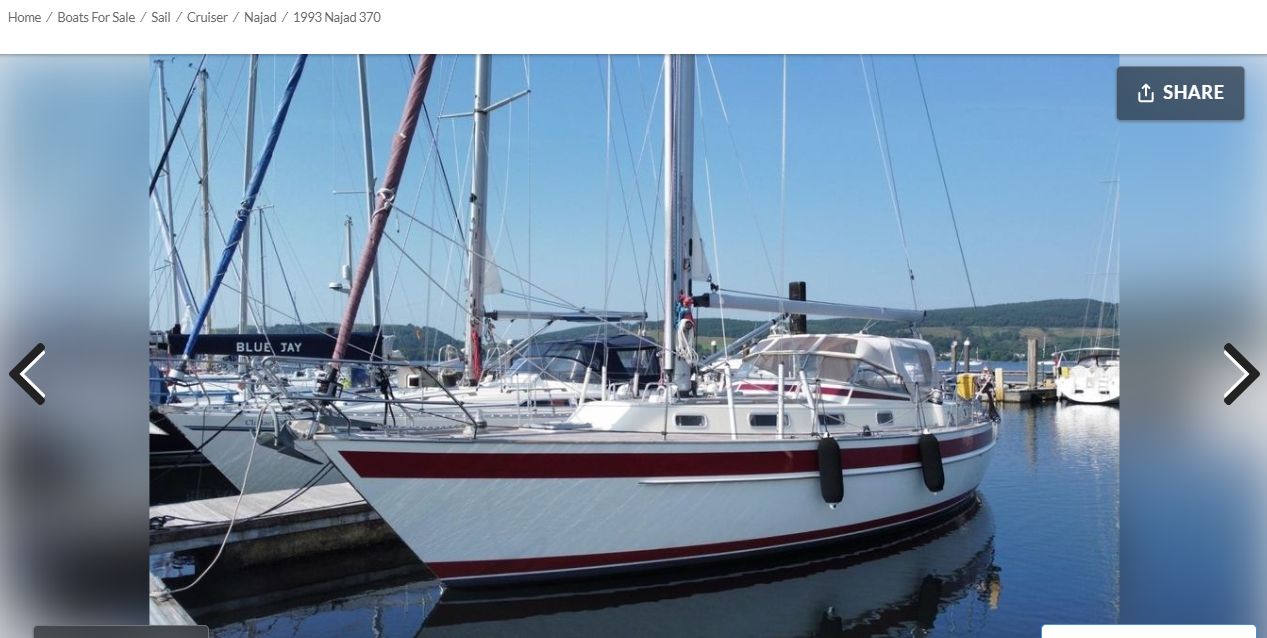
The Swedish-built Najad 370 is a high-quality, luxurious cruiser popular among experienced sailors for its comfortable and spacious interior and top-notch build quality. Its hull design and rigging provide excellent performance and stability on long voyages.
Design and construction of Najad 370
The Najad 370 is a modern design that is known for its luxury and performance. It is constructed with a solid fiberglass hull and a fin keel. The deck is also made of fiberglass and is reinforced with a balsa core. The Najad 370 is designed to be fast and easy to handle, with a luxurious and functional interior. It also features a skeg-mounted rudder and a cutter rig for versatility in sailing.
Creature comforts and functionality of Najad 370
The Najad 370 is a modern design that is known for its luxury and performance. It features a spacious and comfortable interior, with a well-equipped galley, a head, and ample storage space. The cockpit is well-protected and comfortable, with easy access to the deck. The Najad 370 is designed for comfortable long-distance cruising, with features such as a bow thruster and a cutter rig for versatility in sailing.
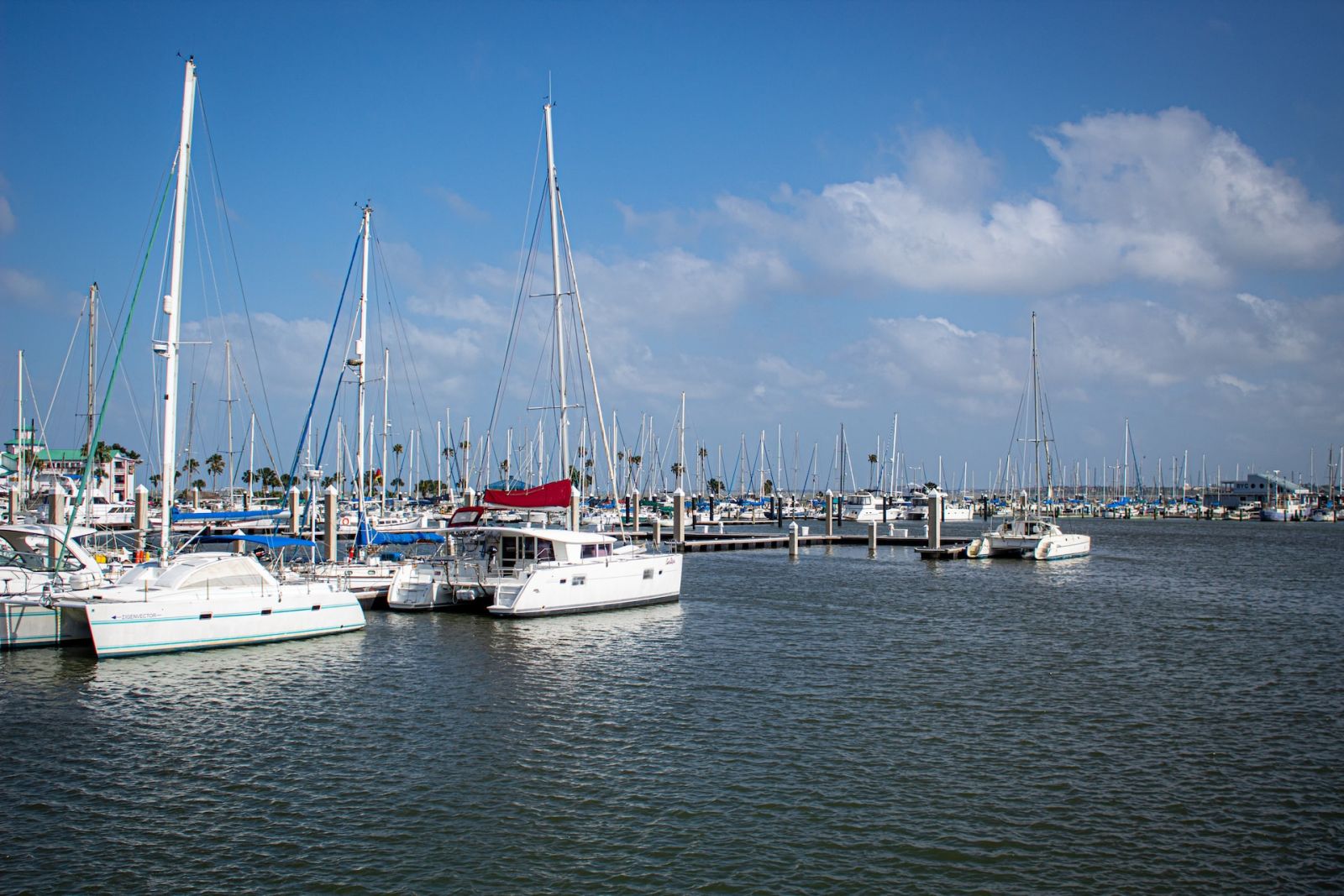
The Moody 42 is a well-built, robust cruiser built for bluewater sailing. With a spacious layout and comfortable accommodations, this boat provides a balance of performance and luxury for extensive cruising.
Design and construction of Moody 42
The Moody 42 is a modern design that is known for its comfort and performance. It is constructed with a solid fiberglass hull and a fin keel. The deck is also made of fiberglass and is reinforced with a balsa core. The Moody 42 is designed to be fast and easy to handle, with a spacious and comfortable interior. It also features a skeg-mounted rudder and a cutter rig for versatility in sailing.
Creature comforts and functionality of Moody 42
The Moody 42 is a modern design that is known for its comfort and performance. It features a spacious and well-appointed interior, with a galley, a head, and ample storage space. The cockpit is comfortable and well-protected, with easy access to the deck. The Moody 42 is designed for comfortable long-distance cruising, with features such as a bow thruster and a cutter rig for versatility in sailing.
If you're wondering what's the best keel design for bluewater sailing , here's our article on it.
Halberg-Rassy 39
The Hallberg-Rassy 39 is a popular bluewater cruiser designed for long-distance voyages. Its solid construction, high-quality materials, and well-designed accommodations make it one of the top choices among seasoned sailors.
Design and construction of Halberg-Rassy 39
The Halberg-Rassy 39 is a modern design that is known for its luxury and performance. It is constructed with a solid fiberglass hull and a fin keel. The deck is also made of fiberglass and is reinforced with a balsa core. The Halberg-Rassy 39 is designed to be fast and easy to handle, with a luxurious and functional interior. It also features a skeg-mounted rudder and a cutter rig for versatility in sailing.
Creature comforts and functionality of Halberg-Rassy 39
The Halberg-Rassy 39 is a modern design that is known for its luxury and performance. It features a spacious and comfortable interior, with a well-equipped galley, a head, and ample storage space. The cockpit is well-protected and comfortable, with easy access to the deck. The Halberg-Rassy 39 is designed for comfortable long-distance cruising, with features such as a bow thruster and a cutter rig for versatility in sailing.
Sweden Yachts 45
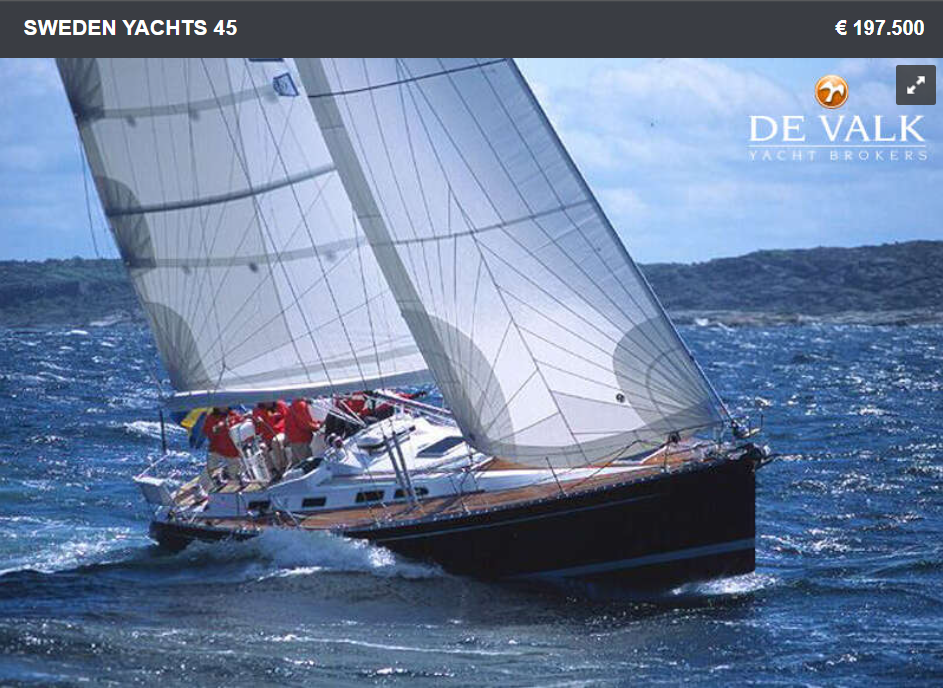
The Sweden Yachts 45 is an elegant and high-performance cruiser, known for its fast and comfortable passages. Its well-built hull and high-quality construction make it a popular choice for long-distance ocean voyages.
Design and construction of Sweden Yachts 45
The Sweden Yachts 45 is a modern design that is known for its luxury and performance. It is constructed with a solid fiberglass hull and a fin keel. The deck is also made of fiberglass and is reinforced with a balsa core. The Sweden Yachts 45 is designed to be fast and easy to handle, with a luxurious and functional interior. It also features a deep bulb keel and a cutter rig for versatility in sailing.
Creature comforts and functionality of Sweden Yachts 45
The Sweden Yachts 45 is a modern design that is known for its luxury and performance. It features a spacious and comfortable interior, with a well-equipped galley, a head, and ample storage space. The cockpit is well-protected and comfortable, with easy access to the deck. The Sweden Yachts 45 is designed for comfortable long-distance cruising, with features such as a bow thruster and a cutter rig for versatility in sailing.
If you're planning to sail solo, here are the best solo bluewater sailboats .
The Boreal 47 is an aluminum sailing yacht designed for bluewater cruising in heavy conditions. With its lifting keel, watertight bulkheads, and solid construction, this boat is highly respected for its safety and durability.
Design and construction of Boreal 47
The Boreal 47 is a modern design that is known for its seaworthiness and durability. It is constructed with a composite hull and a swing keel. The deck is also made of composite and is reinforced with a foam core. The Boreal 47 is designed to be easy to handle and maintain, with a simple rig and a functional interior. It also features a skeg-mounted rudder and a cutter rig for versatility in sailing.
Creature comforts and functionality of Boreal 47
The Boreal 47 is a modern design that is known for its seaworthiness and durability. It features a comfortable and well-appointed interior, with a galley, a head, and ample storage space. The cockpit is spacious and well-protected, with easy access to the deck. The Boreal 47 is designed for comfortable long-distance cruising, with features such as a windvane self-steering system and a cutter rig for versatility in sailing.
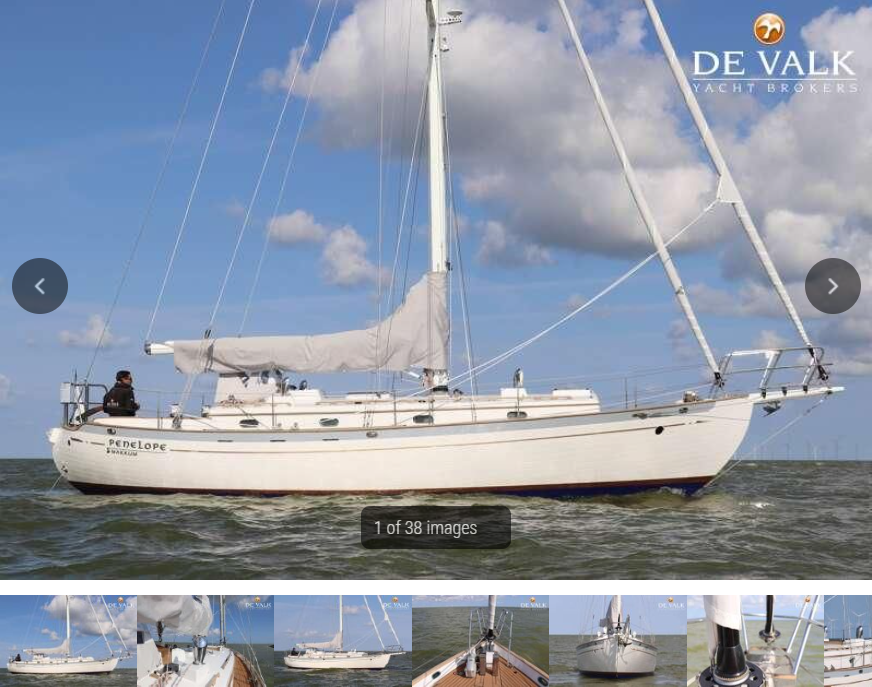
The Tayana 37 is a classic, seaworthy sailboat designed by Robert Perry, known for its durability, comfort, and versatility in sailing. It is a popular choice for long-distance cruising and offshore sailing.
Design and construction of Tayana 37
The Tayana 37 was designed by Robert Perry and first introduced in 1975. It is a full-keeled, heavy displacement, double-ended design that is known for its seaworthiness and durability. The hull is hand-laid fiberglass, with a solid fiberglass laminate below the waterline and a cored laminate above the waterline. The deck is also hand-laid fiberglass, with a balsa core for added insulation and stiffness.
Creature comforts and functionality of Tayana 37
The Tayana 37 features a comfortable and well-appointed interior, with a galley, a head, and ample storage space. The interior is finished in teak and features a traditional layout with a V-berth forward, a main salon, a galley, a head, and a quarterberth aft. The cockpit is spacious and well-protected, with easy access to the deck. The Tayana 37 is designed for comfortable long-distance cruising, with features such as a windvane self-steering system and a cutter rig for versatility in sailing.
Outbound 44
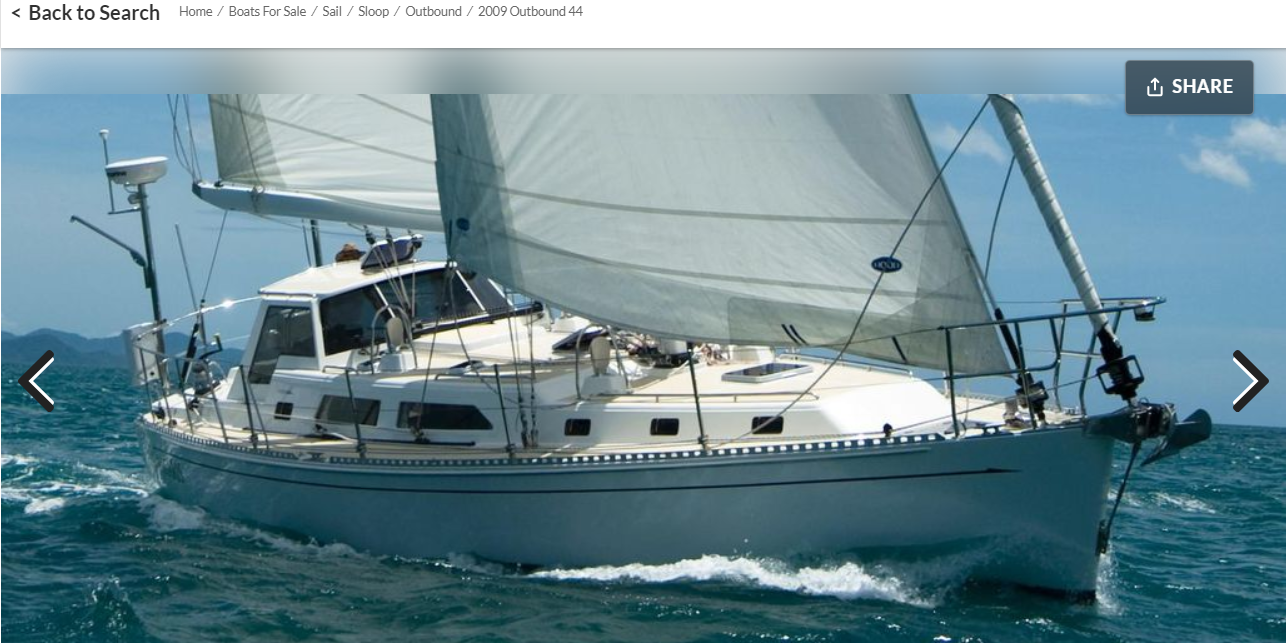
The Outbound 44 is a performance cruiser built for comfortable and fast bluewater sailing. With its powerful sail plan, modern hull design, and thoughtfully laid-out interior, this boat is perfect for those seeking a blend of performance and comfort on the high seas.
Design and construction of Outbound 44
The Outbound 44 is a modern design that is known for its comfort and performance. It is constructed with a solid fiberglass hull and a fin keel. The deck is also made of fiberglass and is reinforced with a balsa core. The Outbound 44 is designed to be fast and easy to handle, with a spacious and comfortable interior. It also features a skeg-mounted rudder and a cutter rig for versatility in sailing.
Creature comforts and functionality of Outbound 44
The Outbound 44 is a modern design that is known for its comfort and performance. It features a spacious and well-appointed interior, with a galley, a head, and ample storage space. The cockpit is comfortable and well-protected, with easy access to the deck. The Outbound 44 is designed for comfortable long-distance cruising, with features such as a bow thruster and a cutter rig for versatility in sailing.
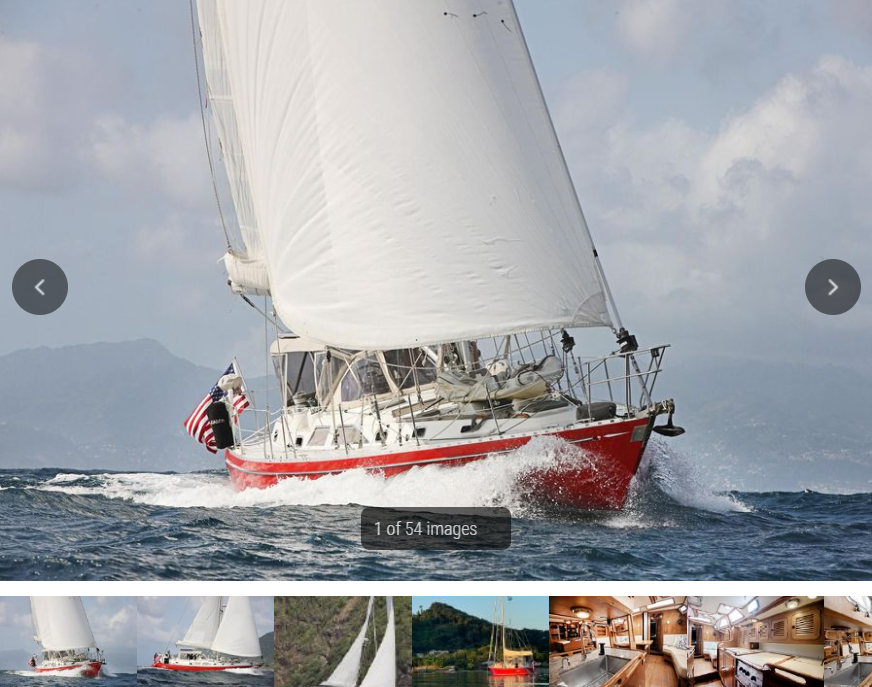
The Hylas 49 is a high-end bluewater cruising yacht known for exceptional build quality and luxurious accommodations. Its powerful sail plan and well-designed hull enable it to provide comfortable and fast passages on any voyage.
Design and construction of Hylas 49
The Hylas 49 is a modern design that is known for its luxury and performance. It is constructed with a solid fiberglass hull and a fin keel. The deck is also made of fiberglass and is reinforced with a balsa core. The Hylas 49 is designed to be fast and easy to handle, with a luxurious and functional interior. It also features a skeg-mounted rudder and a cutter rig for versatility in sailing.
Creature comforts and functionality of Hylas 49
The Hylas 49 is a modern design that is known for its luxury and performance. It features a spacious and comfortable interior, with a well-equipped galley, a head, and ample storage space. The cockpit is well-protected and comfortable, with easy access to the deck. The Hylas 49 is designed for comfortable long-distance cruising, with features such as a bow thruster and a cutter rig for versatility in sailing. The Hylas 49 also features a center cockpit layout for added comfort and protection.
The Malo 46 is a Swedish-built, high-quality bluewater cruiser designed for sailing in varied conditions. Its solid construction, comfortable interior, and impressive performance make it a popular choice among experienced sailors.
Design and construction of Malo 46
The Malo 46 is a modern design that is known for its luxury and performance. It is constructed with a solid fiberglass hull and a fin keel. The deck is also made of fiberglass and is reinforced with a balsa core. The Malo 46 is designed to be fast and easy to handle, with a luxurious and functional interior. It also features a skeg-mounted rudder and a cutter rig for versatility in sailing.
Creature comforts and functionality of Malo 46
The Malo 46 is a modern design that is known for its luxury and performance. It features a spacious and comfortable interior, with a well-equipped galley, a head, and ample storage space. The cockpit is well-protected and comfortable, with easy access to the deck. The Malo 46 is designed for comfortable long-distance cruising, with features such as a bow thruster and a cutter rig for versatility in sailing. The Malo 46 also features a center cockpit layout for added comfort and protection.
Garcia Exploration 45
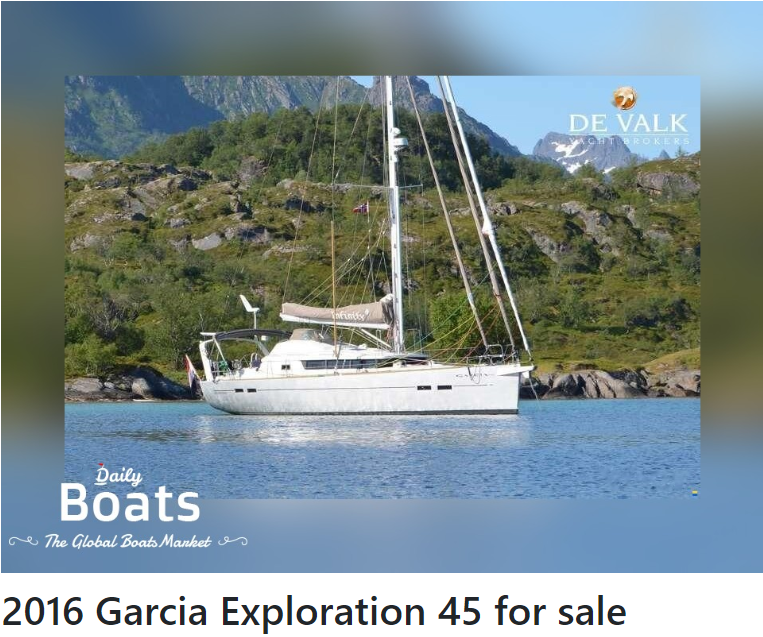
The Garcia Exploration 45 is an innovative, aluminum-hulled cruising sailboat designed for long-distance voyaging. Its reinforced hull, centerboard, and twin rudders make it well-suited for navigating challenging ocean conditions and reaching remote destinations.
Design and construction of Garcia Exploration 45
The Garcia Exploration 45 is a modern design that is known for its seaworthiness and durability. It is constructed with an aluminum hull and a swing keel. The deck is also made of aluminum and is reinforced with a foam core. The Garcia Exploration 45 is designed to be easy to handle and maintain, with a simple rig and a functional interior. It also features a skeg-mounted rudder and a cutter rig for versatility in sailing. The aluminum construction provides added strength and durability, making it ideal for long-distance cruising.
Maintenance costs for the Garcia Exploration 45 are moderate, with regular upkeep required for the engine, rigging, and other systems. The aluminum construction of the Garcia Exploration 45 may require specialized maintenance and repairs.
Creature comforts and functionality of Garcia Exploration 45
The Garcia Exploration 45 is a modern design that is known for its seaworthiness and durability. It features a comfortable and well-appointed interior, with a galley, a head, and ample storage space. The cockpit is spacious and well-protected, with easy access to the deck. The Garcia Exploration 45 is designed for comfortable long-distance cruising, with features such as a windvane self-steering system and a cutter rig for versatility in sailing.
The Garcia Exploration 45 also features an aluminum construction for added strength and durability, and a lifting keel for shallow water exploration. The Garcia Exploration 45 also has a unique feature of a watertight bulkhead forward of the living area for added safety.
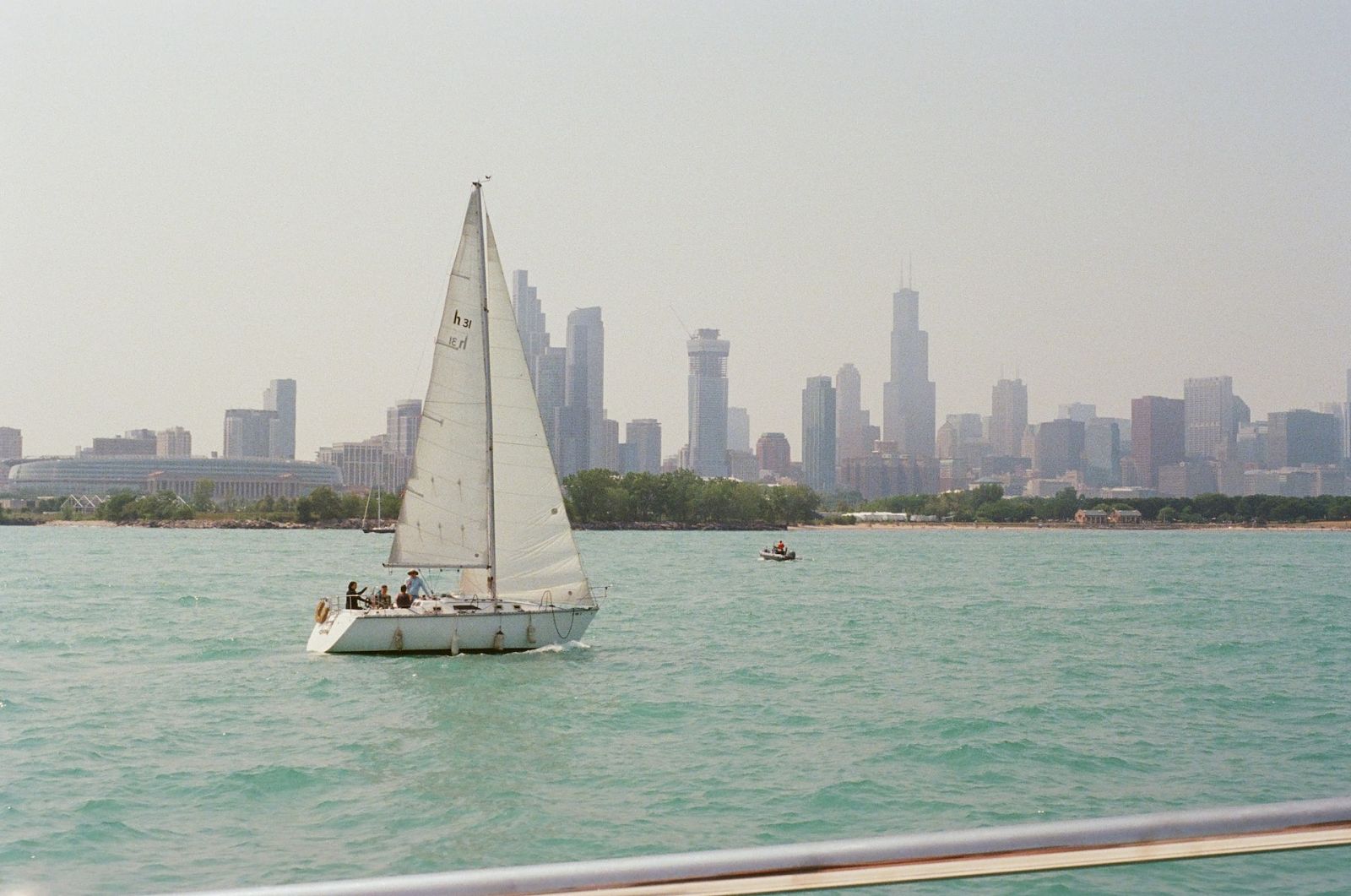

Size and design of the sailboat
The best sailboats in this category offer a well-balanced blend of performance, storage, and living space. As many of these boats are designed for long-distance cruising, having ample storage for provisions, equipment, and personal items is essential. While smaller sailboats might be more affordable and easier to handle, you'll need to strike a balance between size and the level of comfort you desire on extended voyages.
Durability of a bluewater sailboat
These boat's hulls are typically constructed with sturdy, long-lasting materials like fiberglass, steel, or even aluminum. Additionally, the rigging and deck hardware should be robust, capable of withstanding harsh weather conditions and continuous use. As you evaluate potential bluewater sailboats, pay attention to the quality of the craftsmanship and materials used throughout the boat, as this will largely determine its ability to handle the rigors of ocean sailing.
Seaworthiness of the sailboat
This characteristic refers to a boat's ability to handle rough seas, high winds, and other challenging conditions that you might encounter on your journeys. A seaworthy sailboat should exhibit:
- A stable, well-designed hull that can efficiently cut through waves
- A deep, secure cockpit to protect the crew from the elements
- High-quality, easily accessible safety equipment
- Solid, watertight hatches and portlights
When evaluating a sailboat's seaworthiness, it's important to consider its design, construction, and previous ocean-crossing performance, if available.
Comfort and livability of the boat
As you'll likely be spending extended periods at sea, it's essential to have a comfortable living space to make your journey more enjoyable. Key factors in comfort and livability include:
- A roomy, well-ventilated cabin with ample headroom
- Adequate sleeping arrangements for the crew
- A functional galley for meal preparation
- Efficient systems for heating, ventilation, and lighting
To learn more about bluewater sailing , here's our comprehensive article on it.
Let's discuss a few key factors you should look for to find the perfect bluewater sailboat for your needs.
Size matters : As we're focusing on sailboats under 50 feet, it's important to think about how the size of the boat will impact your cruising experience. Smaller sailboats tend to be easier to manage and maintain, while larger ones typically offer more space and comfort. Take into account your sailing skills and the size of your crew when making a decision.
Design and construction : A well-built sailboat plays a vital role in your safety and success when sailing in blue waters. Look for proven bluewater sailboat designs, like those found on Waterborne Magazine's list or Yachting World's selection. A solid construction and well-maintained hull will ensure your boat can withstand the rigors of offshore sailing.
Budget and maintenance costs : It's crucial to consider not only the initial purchase price but also the ongoing maintenance costs when choosing your bluewater sailboat. Established designs often have a good track record for reliability, which can help keep costs down in the long run. Some sailboats under $100,000 can still provide excellent bluewater cruising experiences.
Sailing purpose and destination : Your choice of sailboat will also depend on the type of sailing you plan to do and the destinations you wish to visit. Are you looking for a boat to tackle lengthy ocean passages or a vessel for coastal cruising? Each type might require different features and focuses, so plan accordingly.
Creature comforts and functionality : Finally, think about the amenities you want on your bluewater sailboat—you'll be spending quite some time onboard. A functional galley, comfortable sleeping arrangements, and a functional navigation station are just a few of the features that can make your sailing experience more enjoyable.
Leave a comment
You may also like, 13 world-famous bluewater sailboats under 40 feet.
Bluewater sailboats are designed to handle long-distance cruising in open water, so they need to be tough, reliable, and seaworthy. If you want to set sail on a …
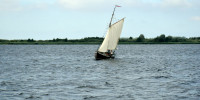
7 Legendary Solo Bluewater Sailboats Worth Considering
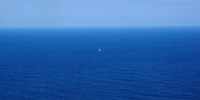
What Is Bluewater Sailing?

What's the Best Keel Design for Bluewater Sailing?

Different Types of Sailing and Racing Explained
Own your first boat within a year on any budget.
A sailboat doesn't have to be expensive if you know what you're doing. If you want to learn how to make your sailing dream reality within a year, leave your email and I'll send you free updates . I don't like spam - I will only send helpful content.
Ready to Own Your First Boat?
Just tell us the best email address to send your tips to:
Yachting World
- Digital Edition

Fast Bluewater Cruisers: the best new performance bluewater catamarans on the market 2018
- Toby Hodges
- August 20, 2018

Many monohull sailors who are thinking of converting to mulithulls for distance cruising seek a combination of the speed and feel of performance cruisers together with the space multihulls provide. To offer proper bluewater cruising ability yet not be too sluggish, a fast cruising cat or tri needs to be smartly designed with payload in mind and built relatively light. Here ’ s where the fast distance cruisers like Outremer, Catana, Swisscat, Seawind, Balance, Atlantic, Neel and Ocean Explorer help offer that potential sabbatical or retirement dream.
Just launched: Outremer 51

The original Outremer 51 launched in 2014 and proved popular, selling more than 50 models. It also garnered a number of European and US yacht of the year titles. But things can always improve, so the French catamaran builder has updated the design with the help of feedback from hundreds of owners. The improvements are superficial and substantial: the interior and exterior styling has been changed, but the boat’s performance has also been tweaked. Not only does this make the boat more fun, it is also “an important safety attribute”, says Outremer. With speeds in excess of 20 knots perfectly achievable, you could certainly outrun bad weather and potentially clock up 400 miles over 24 hours. This sleek-looking boat has on-trend reverse bows, curved coachroof and low-profile steering positions. The helms are slightly raised above the cockpit with a clear 360° view out over the coachroof. It may lack the real estate of a flybridge helm station, but it saves weight and allows the boom to be lower on the mast, all of which helps stability and performance. Control lines all lead back across the coachroof to winches within easy reach of the helmsman, except for the mainsheet, which runs along a track on the aft crossbeam behind the cockpit.

The saloon has comfortable seating and a table for six to eight, with a forward-looking navstation that is a good size. Accommodation is three or four cabins, depending on whether you opt for an owner’s-only hull. If you do, there’s a separate heads and shower, desk, seating and storage. Outremer makes much of the boat’s quietness, free from the grinding and cracking noises you hear as some cats flex. For liveaboards this could be a welcome feature.
First impressions
Outremer has done an impressive job of updating its most popular model, outside and in. I like the modern, muscular look of the sculpted-out topsides and dreadnought bows. Improved build techniques – partly acquired since its takeover of Gunboat – have also allowed the yard to save 600kg over the original model. The 51 has enough of a go-faster appeal for those converting from performance monohulls – the majority of Outremer’s clients, says sales manager Matthieu Rougevin-Baville – while at the same time retaining the seaworthy build and features for which the brand is known. It’s about keeping things simple, good-looking yet durable. For those with the budget, this is the ideal size of boat, in terms of speed bought by long waterline length, volume for accommodation and payload capacity (3 tonnes), for long-term, fast bluewater sailing.
At a glance…
LOA: 51ft 3in (15.65m) Beam: 24ft 4in (7.42m) Draught: 3ft 1in-7ft 7in (0.94m-2.31m) Displacement: 13.7 tonnes Price: from €735,000 Contact: Catamaran Outremer
Just launched: Ocean Explorer 60

Rubbing shoulders with Nautor’s Swan in Jakobstad, Finland, the new team behind this boat have a long track record in building low-impact yachts with high performance. And it’s not just a postcode they share with Swan – German Frers is also the designer of this yacht. The OE60 is the first in a range running to 78ft. There is carbon load-point reinforcing and an all-carbon rig for performance, with the further option of a carbon hull as well. Cutter rigged with a self-tacking jib and staysail, it has a long, sculpted bowsprit for launching downwind sails. Dual helm stations on each hull have long clear views ahead.

I wrote about this catamaran during its conception five years ago, but La Grande Motte was the first time I had seen one. Wow, talk about worth the wait… this is quite simply one of the most impressive luxury multihulls I have been aboard. Four main subcontractors to Nautor’s Swan and Baltic Yachts formed the company and the quality of their craftsmanship is, as you would expect, world class. It is the first production cat for Frers, yet the Argentinian designer has managed to maintain his reputation for alluring lines – this is a long, low and particularly elegant design. I like the helms right in the quarters, a more familiar position for monohull sailors, while the glass-based coachroof allows the helmsman a reasonable sight to the opposite bow. Step inside and it is the true panoramic view these vertical windows all combine to give that really appeals. The forward cockpit is a practical area for manning halyards or standing watch. I also like the clean, spreader-less rig and massive yet practical stowage areas. The skipper told me he had sailed a Gunboat 60 across the Pacific and that this OE60 matches its performance. A key is the C-foils, the most reliable appendage system he has used. This was the second OE60 to be built (the first has done four Atlantic and one Pacific crossing in four years) and is being used for charter. What I’d give for a week aboard this…
LOA: 60ft 7in (18.50m) Beam: 29ft 8in (9.07m) Draught: 2ft 6in-6ft 6in (0.85m-2.00m) Displacement: 18 tonnes Price: from €3.6m Contact: Frers
Just launched: Seawind 1600

The new flagship performance cruiser from the Australian brand made a welcome world debut at La Grande Motte in April. The Reichel Pugh design sits in a similar market to the Outremer 51 – a fast composite cruiser, aimed at couples going long-distance cruising. The first six 1600s sold off plans and Seawind, which owns Corsair, now builds in Vietnam. All boats are built using vinylester and Diam foam. The 1600 is Reichel Pugh’s first production multihull and has a practical air about it that sailors will appreciate. “It has been properly designed to sail fast when loaded,” says Seawind sales manager Jay Nolan. The helmsman can steer from under the solid bimini or can stand outboard, with a good view over the low coachroof. Retractable, captive daggerboards, along with foam-cored lifting rudders in cassettes, allow true shoal draught capability. The daggerboards are housed underdeck and controlled from the cockpit. The running rigging is, unusually, led under the coachroof and bridgedeck aft to a single central winch on the aft crossbeam. Reefing lines and the self-tacking jib sheet also lead to this protected, vertically mounted winch. The cockpit is smallish, linked to the interior via a huge sliding window.

I quickly took to this boat. The choice of performance monohull specialists to design a cruising cat is unusual, yet here the combination of Reichel Pugh’s reputation for winning lines and Seawind’s three decades of catamaran building experience has worked admirably. Sailors will appreciate the practical elements incorporated throughout. The design itself has particularly narrow hulls at waterline level, a low freeboard and coachroof, and the incorporation of a proper payload capacity into the light displacement. The use of captive boards and rudder cassettes allow for both sailing to windward and shoal cruising. The cassettes also create the option to replace or repair a blade easily and the low coachroof allows proper forward visibility from either helm. With the addition of larger portholes in the cabins, the 1600 gives an interesting fast cruising option for couples.
LOA: 51ft 8in (15.74m) Beam: 25ft 10in (7.90m) Draught: 8ft 6in-2ft 1in (2.6m-0.54m) Displacement: 13 tonnes Price: from €740,000 Contact: Seawind
If you enjoyed this….
Yachting World is the foremost international magazine for bluewater cruisers and offshore sailors. Every month we have practical features to help you plan and prepare to realise your sailing dreams. Build your knowledge month by month with a subscription delivered to your door – and at a discount to the cover price. S ee our latest offers now.
Better Sailing

What Makes a Good Blue Water Cruising Sailboat
Before we get started, to analyze the features that make a good sailboat, I’d like to have you all take a seat please— and stop sharpening those knives! That includes you, sir, with the calloused hands and wood shavings in your beard!
For some reason, boat talk can bring out the ogre in some people, which is too bad. One of the great things about sailing is the incredible diversity of sailboats to do it in: big sailboats, little sailboats, wide sailboats, skinny sailboats, monohulls, multihulls, wood sailboats, fiberglass sailboats, steel sailboats, aluminum sailboats—even sailboats made of cement! The number of sailboat types that continue to be built and sailed, even today, is truly incredible.
My own “breakthrough” in appreciating boat diversity came a few years ago on a bareboat charter cruise on Lake Erie with my wife. As I’ve intimated elsewhere, there was a time when I wanted nothing to do with any boat that wasn’t either a racer or an old classic with heartbreaking overhangs. Then along came this charter aboard a 34-footer of the type I had always dismissed as being the epitome of a soulless “plastic” cruiser.
In fact, I had barely set foot aboard that little trim vessel before I realized how wrong and even downright ignorant I’d been. The marina was as crowded as a shopping mall on the day after Thanksgiving, but we backed that handy little sloop out of her slip and turned toward the channel pretty as you please. A couple of hours later, a line of thunderheads rumbled in from the northwest, and we had to reef down for a bit of a squall, but again, there was no problem—despite some hail and about 35 knots of wind.
That night we relaxed in the comfortable cockpit, slowly working our way through a bottle of wine. Then we went below for a good night’s rest in the boat’s spacious aft stateroom. The next morning we awoke refreshed, had breakfast, and then headed back out onto the lake, ready and eager to do it all over again. In short, we had an absolutely fantastic time, and the boat performed splendidly in every way. It really was a revelation, both the quality of the boat and the realization of my own pig-headedness.
This is not to say that all boats are good for all purposes. Deepwater cruisers need to meet certain criteria that make them markedly different from top-flight racers. The same goes for daysailers and coastal cruisers. The point is, each design has to be judged on its merits and in the context of the boat’s intended purpose. Assuming the builder has successfully executed the design, whether or not the boat is a good one ultimately depends on the sailor.
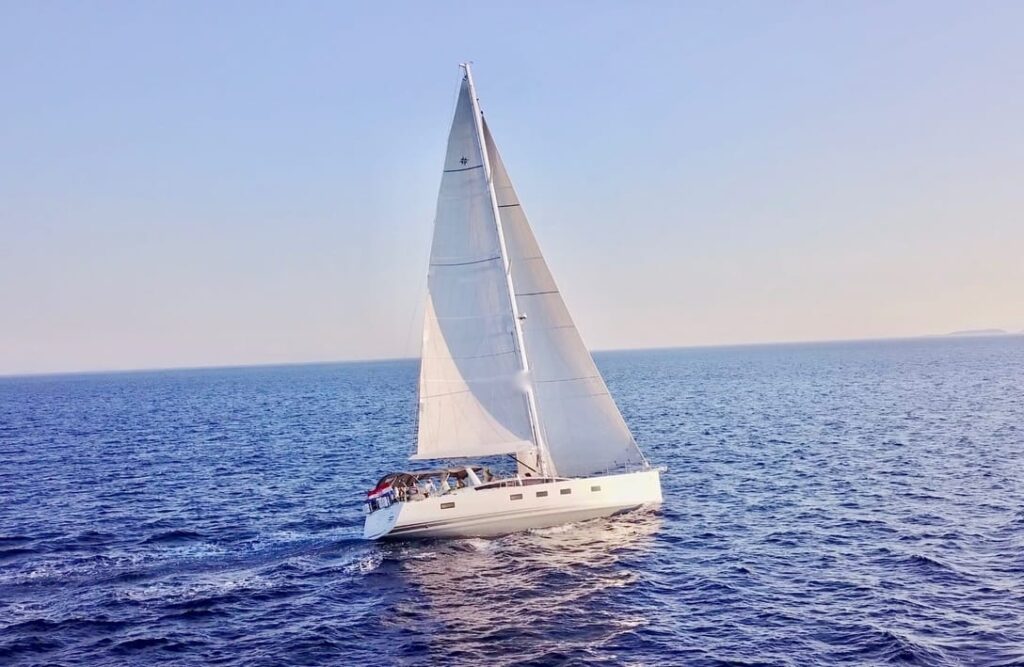
>>Also Read: Sailing Pre-Departure Checklist
What Makes a Good Blue Water Sailboat?
When it comes to crossing oceans with a sailboat, you obviously need a sturdy, reliable boat in the event you meet serious winds. The ideal bluewater cruiser, however, can’t be simply a waterborne tank—otherwise, it will take forever and a day to get anywhere, and you’ll be sitting duck for any storm heading your direction. In addition, the ideal cruising boat needs to take care of its crew on days when it isn’t blowing stink—days that far outnumber the stormy ones. It also needs to provide a comfortable place to rest and relax at the end of a day’s sail—not a trivial consideration, as even the most dedicated cruiser spends substantially more time at anchor or tied to the dock than out on the briny. Even an aggressive circumnavigation schedule will generally allow the crew two days in port for every day of sailing.
Finally, a bluewater cruiser needs to be both seaworthy and sea-kindly in its design and construction—that is, it must be able to both stand up to the rigors of heavy weather and spare the crew undue fatigue in the course of a typical passage. This is a boat that sails well but doesn’t require tremendous effort to keep it in trim. It’s a boat that tracks well—i.e., it’s steady on its helm—and has easy motion, so the crew doesn’t get banged up every time the weather starts kicking up some waves.
Here Is A Short List of Characteristics That Make a Good Offshore Sailboat
Structure and equipment installation.
To be truly seaworthy, a boat must be structurally sound and its equipment correctly installed. The hull-to-deck joint must be well made, and all bulkheads and other interior structural elements should be securely bonded to the underside of the deck and inside of the hull. Equally important, items like hatches, rudder bearings, and steering gear need to be robustly constructed and robustly installed, so they can withstand the force of a crashing sea.
On deck, a deepwater cruiser should have tall stanchions set in sturdy bases. It will often have bulwarks—or at the very least, toerails—to brace your feet against if you ever find yourself sliding down the deck when the boat is on its ear. There should be plenty of sturdy handrails along the cabintop so that you never have to make any kind of “leap of faith,” lunging from one handhold to the next when moving forward to the mast or foredeck. There should also be adequate side deck space between the cabin trunk and the bulwarks or toerail so that going forward isn’t a struggle. And, of course, the side decks and foredeck should be surfaced with aggressive nonskid. Beware of stylishly molded cabin trunks—their gracefully curved surfaces can be treacherous in rough weather.

>>Also Read: Cruising Sailboats – Parts and Features
Hull Design
The hull of a good cruising sailboat should have relatively low freeboard (distance from the waterline to the upper edge of the deck) to minimize the impact of windage in extreme weather. It should also have a moderate beam, a bit of forefoot beneath the waterline, and a full keel or a moderately proportioned fin keel to help with heaving. The cockpit should be large enough to be comfortable in normal conditions but not overly large. If you’re ever pooped, a too-large cockpit will hold that much more water, the weight of which can depress your stern and make you vulnerable to being pooped again.
All deepwater boats should have a bridgedeck “step” of sorts between the front of the cockpit and the companionway leading below, so water from a flooded cockpit won’t slop into the cabin. The cockpit should also be equipped with large drains to allow water that comes aboard to leave as quickly as possible.
Finally, a blue water cruiser must have a safe limit of positive stability (LPS)—at least 120 degrees, although higher is better—to prevent it from capsizing in heavy seas. LPS is the heel angle at which the hull and keel stop resisting the capsizing forces of the wind and waves and actually abet them until the boat is completely inverted. In addition, the LPS dictates how stable a boat will be when it’s upside down—in other words, how easily the boat will re-right itself. As Calder explains, a sailboat with an LPS of 100 degrees will, in theory, remain inverted for about 5 minutes before it’s righted again by wave action.
A sailboat with an LPS of 120, on the other hand, should right itself in about 2 minutes. A sailboat with an LPS of 140 will theoretically pop right back up almost as soon as it goes over. Think about how long you can hold your breath—and about how long your hatches, hatchboards, vents, and portlights will hold when the boat is upside down in surging conditions. A couple of minutes could make all the difference in the world. For the record, many sailors believe that an LPS of 115 degrees is acceptable on an offshore boat.
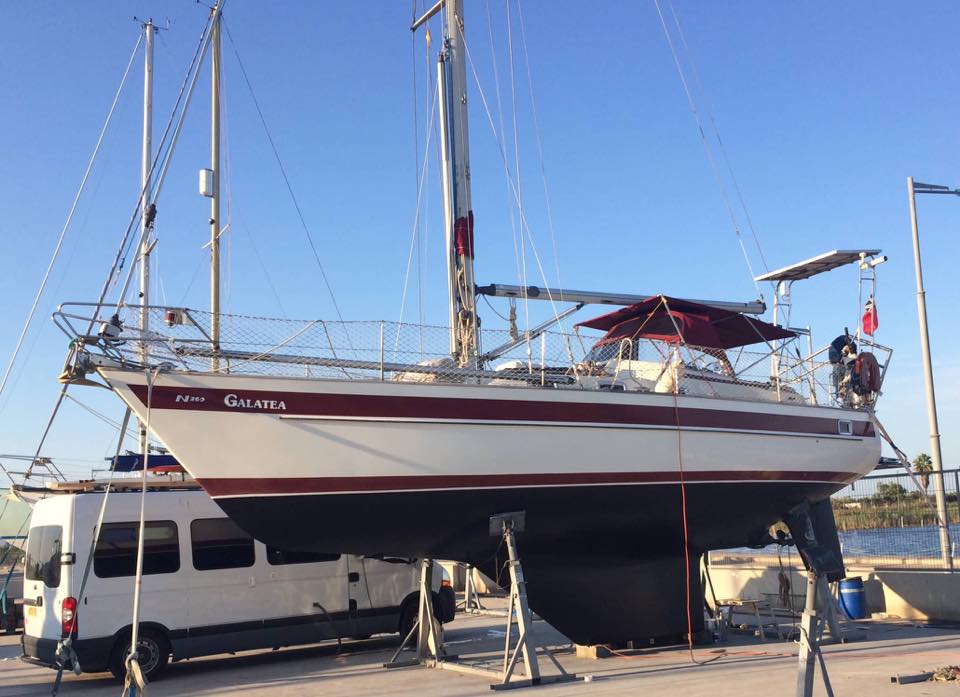
>>Also Read: Full Vs Fin Keel On Sailboats
Comfort and Ease of Sailing
Many of the features that make for a seaworthy boat also make for a seakindly one. A sailboat with a moderate length-to-beam ratio, a bit of forefoot, and a full keel or moderately proportioned fi n, for example, not only heaves-to well but also tends to track better. Granted, the boat might not be the fastest thing on the water, but what cruising sailor wants to continually tweak and trim to eke out that last fraction of a knot of boat speed anyway? Likewise, a solid masthead rig with a moderate sail area will get you where you want to go without springing any nasty little surprises.
In Nigel Calder’s (sailing writer) words, “On a cruising boat, it is a fundamental mistake to gear the concept of fast passage making to maximizing the absolute speed potential of a boat at the expense of ease of handling, comfortable motion, stability, security, and other highly desirable attributes. Exhilarating performance can be fun in the short term but extremely fatiguing in the long term. Instead, the goal should be to achieve good sustained performance in all kinds of conditions in an environment that is as relaxing and as much fun as it can be.”
A deepwater boat should have V-shaped sections in the bow that will allow the hull to slice through the waves on a beat or close reach, instead of slapping and pounding. It should also be stiff enough to carry sail, but not so stiff that it has a “snappy” motion when coming off a swell—which calls for a moderate L/B to ensure adequate but not too much form stability. In this same vein, a boat with a moderate to heavy displacement-to-length ratio—unlike a featherweight speedster—tends to pass smoothly through the waves instead of bouncing over them or simply bobbing on top of them like an oversized cork.

>>Also Read: Must-Have Boat Safety Equipment For Sailing
Accommodations
The list in this category is pretty exhaustive. An ocean is a big place, but for the crew of a sailboat on passage, it’s essentially no bigger than the boat’s LOA (Length Overall). Nonetheless, the shortlist includes adequate sea berths, a galley that can be safely used in a seaway, plenty of storage, and a cockpit that’s comfortable and safe for watchkeeping.
When it comes to sea berths, simpler is better. Each berth needs to be a little more than 6 feet long and located no farther forward than around amidships. The motion in a forepeak berth in any kind of seaway will make sleeping impossible. Berths should also be parallel with the boat’s centerline, not angled dramatically inward. Otherwise, either your head or feet will be higher whenever the boat heels while you’re trying to sleep. Finally, sea berths should be straight to avoid cramped shoulders or feet. This consideration may seem obvious, but many modern cruising boats are equipped with curved or angled settees—those seats in the saloon that double as sea berths underway— which look great at boat shows but can be absolutely miserable for sleeping.
In the galley, you need a cooking area that not only includes the necessary equipment for preparing meals—stove, microwave, oven, cutting board, and the like—but a layout that will make cooking safe and as easy as possible when the boat is sailing on its ear. The key is a wraparound layout, in which the counters form a U or G shape, so you can brace yourself against an opposing counter or in a corner and free your hands for cooking.
Sinks should be deep and as close to the centerline as possible, where the motion is less severe. Fiddles—the little walls or barriers surrounding the countertops to stop things from sliding off —need to be tall and perpendicular, not low and artistically rounded. The galley should be located as close to the companionway as possible for ventilation and ease of passing snacks or coffee to crewmembers on deck. A location near the companionway also puts the galley well aft, where hull motion is easier.

>>Also Read: What To Wear When Sailing
You can never have too much storage. Extended cruising requires a tremendous amount of storage space—for everything from charts to food to spare engine parts and toothpaste—and unless your boat is 50 feet or longer, there’s barely enough room for everything. Not only that, storage space can be surprisingly scarce even in larger cruisers, as designers struggle to shoehorn in more and more accommodations per foot of LOA. The double-size quarter berths tucked under the cockpits of many newer boats may look great. Still, the only way to fit them in is to eliminate a voluminous amount of storage that is otherwise available under the cockpit seats.
Large staterooms in the bow take away hull volume that could otherwise house wet lockers for storing damp foul-weather gear, and “sugar scoop” transoms with those oh-so-convenient swim steps leave no room for lazarettes—those wonderfully spacious lockers located aft of the cockpit. Next time you’re at a boat show, do a quick inventory of that 45-foot beauty with the multiple heads and staterooms. See what’s behind some of those lovely cherry-finished doors, and tally up the total storage area—including those “cabinets” that are so tiny they’re essentially useless. You may be surprised that a “big” boat can actually have remarkably little room for putting things away.
The cockpit should be the right size to “enclose” the on-watch crew—usually one person unless the boat and crew are very large—so they don’t have to worry about being washed around in heavy weather conditions. A cockpit’s width and length are key; there are few things in this life more reassuring than tucking yourself in where the cockpit seat meets the cabin trunk and having your feet braced against the cockpit seat or seat back to leeward— an unrealized comfort if the cockpit is too wide. In addition, all the necessary control lines should be close at hand. The helmsman shouldn’t have to let go of the wheel or tiller when trimming either the main or the jib sheets. The cockpit should also have several strong points where you can secure a safety harness and easy access to jacklines without having to expose yourself to the waves.
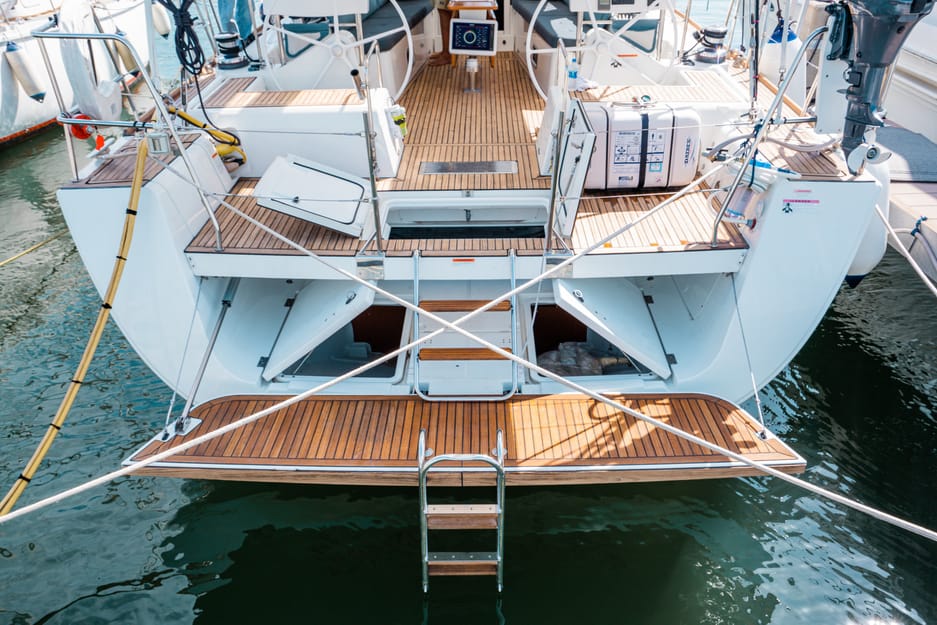
What Makes a Good Offshore Blue Water Sailboat? – Summary
To reiterate, these are just a few features of a good cruising sailboat—albeit critical ones. The real key that makes a good offshore sailboat is to find one that’s functional and moderate in the areas of sailing and accommodations; fast but not too fast; roomy but not too roomy; and in which everything has a purpose. After all, crossing an ocean in a tiny sailboat is serious business—tremendously satisfying, but serious nonetheless.
Peter is the editor of Better Sailing. He has sailed for countless hours and has maintained his own boats and sailboats for years. After years of trial and error, he decided to start this website to share the knowledge.
Related Posts

Atlantic vs Pacific: Which is More Dangerous for Sailing?

Why Do Sailboats Lean?

How Does a Boat Sail Upwind? Unveiling the Mechanics of Against the Wind Sailing

How Does Sailing Work? The Physics of Sailing
- Buyer's Guide
- Destinations
- Maintenance
- Sailing Info
Hit enter to search or ESC to close.
- BOAT OF THE YEAR
- Newsletters
- Sailboat Reviews
- Boating Safety
- Sailing Totem
- Charter Resources
- Destinations
- Galley Recipes
- Living Aboard
- Sails and Rigging
- Maintenance
- Best Marine Electronics & Technology
10 Best Used Cruising Sailboats
- By John Kretschmer
- Updated: June 4, 2021
The appeal of offshore voyaging is difficult to explain to land people who can’t imagine life without basic human rights like copious quantities of hot water and unlimited data. It can even be challenging to explain to fellow sailors who think the notion of spending days or weeks at sea is a form of waterboarding, some kind of self-inflicted torture.
But for those of us who understand, who relish intimacy with the untamed wilderness that is the ocean and embrace self-reliance and individual expression while accepting the dispassionate whims of Neptune, this is the good life.
There are two essential truths about this life: One, money does not matter. Cruising budgets and lifestyles reflect bank accounts with variously positioned commas; it’s the passages and landfalls that add up, not your investment portfolio. And two, a good bluewater sailboat — not necessarily an expensive boat, but a well-designed, solidly built, imminently seaworthy boat that is only limited by your moxie and imagination — is the key to successful bluewater passagemaking.
So, to that second point, I’ve compiled a list of interesting and affordable cruising sailboats for serious voyaging. A list of 10 sailboats for any purpose, much less world cruising, is sure to evoke outrage from strong-minded sailors, who by nature tend to be a bit opinionated. Stand by before hurling insults my way, and let me explain. I have decided to stay away from the sailboats we know by heart, the iconic old boats that usually populate a list like this: the Westsail 32, Tayana 37, Shannon 38 and Valiant 40 (the last of which, with a bit of searching, can still be found at or just below $100,000).
My list of some of the best liveaboard sailboats is eclectic and includes a mix of well-known and obscure manufacturers, but all the boats are linked in three ways: All are top-quality vessels capable of crossing oceans. They’re affordable, although in a few cases you have to look for older models in less-than-stellar condition to stay below $100,000. Indeed, in some ways, this list of used sailboats is a function of age; most of the boats were priced at more than $100,000 when new but have dipped below our self-imposed threshold in middle age. And finally, they’re all boats that I have encountered in the past few years in far-flung cruising destinations .
Island Packet 35
Love them or loathe them, Island Packets are everywhere. To some, the beamy, full-keel, high-freeboard hull designs seem quaint, to put it charitably. To others, the robust construction standards, roomy interiors and overall user-friendliness make them the ideal cruising boat. More than most, sailing vessels are compromises, and Bob Johnson and his crew at Island Packet were brilliant in prioritizing the needs of sailors. The IP 35 was introduced in 1988 and features a huge cockpit, an easy-to-handle cutter rig with a jib boom, and a clever, comfortable interior with the volume of many 40-footers. It might not be the fastest boat upwind, but the long waterline translates to good performance off the breeze, meaning the IP 35 finds its stride in the trade winds. In all, 188 boats were built before production stopped in 1994.
Don’t confuse the IP 35 with the IP 350, which was launched in 1997 and included a stern swim step. You won’t find a 350 for less than $100,000, but you will have a choice among 35s, especially those built before 1990. With two nice staterooms, the 35 is ideal for family cruising. I know of a couple of 35s that have completed the classic Atlantic Circle passage. It’s perfect for a sabbatical cruise because it holds its value and there’s a ready market when it comes time to sell.
Prout Snowgoose 37
There’s no room for discussion: Catamarans are crossing oceans, and many sailors are choosing cats for world cruising. My last visits to the Azores and Canary Islands, the classic Atlantic waypoints, proved the point. I’m not much of a statistician, but by my count, at least a quarter and maybe a third of the boats I saw were catamarans. There would be more on this list, but they are just too expensive. Finding a quality catamaran for less than $100,000 is tough. One boat to consider is the classic workhorse multihull, the Prout Snowgoose 37.
When the Snowgoose 37 was launched in 1983, English builder Prout & Sons had already been in business for nearly 50 years. The 37 was an updated version of the Snowgoose 35, one of the most successful cruising cats ever. In 1986, the 37 was updated again; the Snowgoose Elite model included more beam and interior upgrades. These models are challenging to find for under $100,000, but it’s possible. A quick glance at yachtworld.com shows several of both models available for less than $100,000. Again, the strong dollar makes European boats an excellent value.
The Snowgoose 37 is not sexy like go-fast cats, and not roomy like modern cruising cats. It is, however, seaworthy. Of the 500 built, many have circumnavigated. Older boats have solid fiberglass hulls, and more recent models are solid glass from the waterline down and cored above. The cockpit is rather compact by catamaran standards, and the bridgedeck is solid (no tramp). Many 37s and all Elites were rigged with staysails, a big plus in heavy weather. The masthead-rigged Snowgoose 37 can be sailed like a monohull offshore, and it’s quite nice not having a huge, roachy mainsail to wrestle with in a storm. With a 15-foot-3-inch beam for the 37 and a 16-foot-3-inch beam for the Elite, it’s easy to find affordable dockage and yards for haulouts. Most boats have three double cabins, making the Snowgoose 37 an ideal family cruiser.
The Corbin 39 is not as well known as it should be. It’s a capable bluewater sailboat cruiser with many impressive voyages logged. My Quetzal spent several weeks moored alongside a handsome 39 in Corfu that had sailed around the world, and I also spent a winter in Malta in the same boatyard as another 39 that had recently crossed the Atlantic. A canoe-stern, flush-deck pilothouse cutter, the 39 was offered with either an aft or center cockpit. Designed by Michael Dufour and constructed by Corbin les Bateaux in Canada, hull number one was launched in 1977. Built in various locations in Quebec, 129 boats were launched before a fire destroyed the deck tooling in 1982. A new deck with a larger cockpit was designed, and 70 more boats were laid up before production ceased in 1990.
The rub on the Corbin 39 is that the majority of boats were sold as kits with owner-finished interiors. Kits varied from just hull-and-deck to “sailaway,” with everything fitted except the interior. Only 15 boats were finished at the factory. Not surprisingly, the interior quality is unpredictable, from rough-hewn lumberyard specials to beautifully handcrafted gems finished by marine professionals. The difference is reflected in the price. A nicely finished, well-equipped model from the mid-’80s typically sells for between $60,000 and $80,000.
The hull shape features a long fin keel and skeg-mounted rudder. The hulls are heavily laid up and include Airex coring. Early decks were plywood-cored, but most boats have Airex in the deck as well. Ballast is 9,000 pounds of internal lead, translating to a 40 percent ballast-to-displacement ratio. The wide flush deck is spacious, and the sleek pilothouse usually includes inside steering. Massive double anchor rollers are incorporated into the bowsprit in later models. Most boats include a double-spreader spar, and almost all were set up as cutters. There’s plenty of freeboard, which becomes obvious below. While interior arrangements vary considerably, there’s a lot of room to work with. I prefer the post-1982 aft-cockpit 39s; they’re generally of a higher quality than earlier boats.
Cabo Rico 38
“The Cabo Rico 38 hull shape is the one in which everything came together best,” wrote Bill Crealock in his design notes. He might have changed his mind later in life, considering that the Cabo Rico was introduced in 1977 and he designed many boats after that, but few will dispute that this 38-foot cutter, built in Costa Rica, is flat-out beautiful. From the clipper bow to the sweet sheer to the abundance of honey-colored teak, the Cabo Rico 38 is a boat to inspire the most practical among us to quit their job, buy this vessel, and head for the South Pacific.
Not surprisingly, many people have done just that. Cabo Rico built 200 full-keeled 38s, with most of the production occurring in the 1980s. There’s always a selection of boats for sale for less than $100,000. Cabo Rico was an outlier among manufacturers of the time, building serious cruising boats in Central America instead of Taiwan, but quality control was always excellent. The full keel is slightly cutaway, and the rudder is attached to the trailing edge. The prop is in an aperture and totally protected, but not well suited to backing into a slip. Full-keel boats may make some younger sailors cringe, but the CR 38 has a very soft ride in rough seas and heaves to effectively. It also has a solid fiberglass hull with a layer of balsa for insulation. Sometimes it’s noted that the hull is balsa-cored, but it’s not. After about hull number 40, lead was used instead of iron for internal ballast. The deck is balsa-cored, however, and there’s a substantial bulwark. Items to be wary of are the teak decks (most 38s have them) and the fittings supporting the bobstay.
A true cutter rig, the 38 has just under 1,000 square feet of working sail area and performs better than most people suspect. The staysail was originally set on a boom that cluttered the foredeck and limited sail shape. Many boats have been converted with furling staysails sans the boom — a nice upgrade. When the wind pipes up, the 38 tracks nicely with a reefed main and staysail. I encounter 38s all over the Caribbean. They’re easy to spot; they’re the beautiful boats in the anchorage.
Tayana Vancouver 42
Ta Yang, builder of Tayana sailboats, has been building capable cruising boats forever, it seems. The Robert Harris-designed Tayana Vancouver 42 has been a mainstay of the serious cruising fleet since the day it was launched in 1979, and is still in demand today. The company built 200 boats, mostly in the ’80s and early ’90s, although a few V42s were built into the 2000s. With a bit of digging and some haggling, you can find boats for less than $100,000, but they’re likely to be older models. As of this writing, yachtworld.com has eight V42s listed, with three asking less than $100,000.
I’ve encountered the V42 all over the world, and in my yacht-delivery days, I had the pleasure of delivering a couple of 42s up the East Coast and down to the Caribbean. The double-ended hull shape with a fin-skeg underbody is stiff and seaworthy, if not wickedly fast. Considering the rugged construction, with a solid fiberglass hull and balsa-cored deck, nobody has ever accused Ta Yang of going light on its boats. Ballast is internal iron, a massive single casting that weighs in at 11,800 pounds. Ta Yang has evolved as a builder, and later models included upgrades like vinylester resin and larger Yanmar diesels.
A true cutter, the V42 has a double-spreader rig and is heavily stayed. The seagoing deck is cambered to shed water. Teak decks, with all their virtues and vices, were common; I’d look for a boat that’s been de-teaked. Like the Corbin 39, the V42 came with either a center or aft cockpit, although most boats were aft-cockpit models. The aft cockpit is deep and secure, if a bit tight due to volume sacrificed by the canoe stern. The center cockpit is cramped but offers excellent visibility. The interior is lovely, with exquisite Taiwanese joinery. Although interior arrangements vary because Ta Yang encouraged owner input, across the board, this is a friendly boat for living aboard. The aft-cockpit model includes one head and a traditional layout with excellent light and ventilation. The center-cockpit model features a large owner’s stateroom aft.
Wauquiez Pretorien 35
The Pretorien 35 does not pay homage to tradition. The Euro-style low-slung wedge deck and flattish lines were thoroughly modern when the Pretorien was launched in 1979. Sure, there are IOR influences in this well-proven Holman & Pye design, including a slightly pinched stern, cramped cockpit, and a high-aspect, short-boom mainsail that results in a large foretriangle. But a small main is easy to handle offshore, especially in squally conditions, and a large poled-out furling genoa provides a low-stress way to cross oceans. The test of a design is revealed long after the launch, and the Pretorien has aged brilliantly. It’s often mistaken for a Swan or Baltic. Famed voyager and author Hal Roth chose a Pretorien for his last boat.
Below the water, which is what really matters at sea, the Pretorien pushes the right buttons for serious sailing. A fine entry provides enough of a forefoot to prevent pounding in lumpy conditions, and as on the Valiant 40, the fin keel incorporates a stub to which the external ballast is fastened. The rudder is mounted well aft for excellent steering control, especially on a deep reach, and is tucked behind a narrow but full-length skeg. The Pretorien displaces 13,000 pounds, of which 6,000 pounds is ballast, translating to a stiff, seakindly boat.
The construction is superb. The solid fiberglass hull includes longitudinal stringers that stiffen the panels and encapsulate the bulkheads. Tabbing and fiberglass work is first-rate throughout. Wauquiez was one of the first builders to use solid laminate beneath high-load deck fittings. The side decks are wide and, with the chainplates well inboard, easy to navigate. The interior arrangement is conventional, but ample beam amidships helps create a surprisingly spacious feel below.
There were 212 Pretoriens built during a seven-year production run, so there’s usually a good selection of boats on the used market. Today’s strong dollar makes European Pretoriens an excellent value.
Gulfstar 44
Gulfstar had a terrible reputation in the early ’70s: It was infamous for producing wide-body motorsailers with tiny rigs and chintzy Formica interiors. Company founder Vince Lazzara was adept at reading market trends and upped his game in the late ’70s and ’80s. Lazzara, who also founded Columbia Yachts, was a veteran of the production-sailboat wars and realized that buyers were demanding high-quality boats that sailed well. The Gulfstar 44 was launched in 1978, and 105 were sold before the company started producing the Hirsh 45 in 1985.
Some mistake the G44 for a Bristol, and it has a similar profile, right down to the teak toerail and raked cabin trunk. A sleek center-cockpit design, the hull shape features a 5-foot-6-inch fin keel, a skeg-hung rudder and moderate proportions. I know the boat well, having delivered one from Bermuda to Annapolis and another from Fort Lauderdale to Boston. It has a nice ride in lumpy seas and powers up when the big genoa is drawing on a reach. The construction is typical of the time, with solid fiberglass hulls and cored decks. Gulfstars were known to blister, and it’s likely that any 44 you find will have had an epoxy bottom job along the way — and if it hasn’t, it will need one. The keel-stepped spar has an air draft of 55 feet. Some owners have modified the sloop rig with a staysail. The cockpit is roomy, especially for a center-cockpit design, although there’s not much of a bridgedeck. All sail controls are led aft. Lazzara was an early proponent of this feature, and the boat is user-friendly overall.
The interior sells the boat. It’s nicely finished in teak, and the layout is made for living aboard. The aft cabin includes an enormous double berth with an en suite head and stall shower. The main saloon is spacious and well ventilated, although beware of the plastic opening portlights. If you are looking for a comfortable, well-built center-cockpit cruiser but can’t find one that you can afford, track down a Gulfstar 44; you’ll be pleasantly surprised.
Any list of bluewater cruising sailboats must include a Robert Perry design. I could have easily put together nine Perry boats for this list. The Nordic 40 may surprise some, especially because 40 feet is an iconic length, bringing to mind such boats as the Valiant 40, Hinckley Bermuda 40, Bristol 40, Pacific Seacraft 40, Passport 40 and others. The trick is finding a 40-footer for less than $100,000. Nonetheless, the Nordic 40 and its larger sister ship, the 44, are among my favorite boats.
Based in Bellingham, Washington, Nordic produced world-class yachts during its brief production run in the 1980s. Only 40 Nordic 40s were launched between 1982 and 1987, but they’re worth seeking out on the used-boat market. The 40 features the classic double-ended Perry hull shape, with a fine entry, a deep and powerful fin keel, a skeg-mounted rudder positioned well aft, and a reverse transom. Freeboard is moderate and the sheer line is subtle, but to my eye, with its double-spreader rig and gently sloping deck line, the boat is poetry in the water.
The hull is solid fiberglass and the deck is balsa-cored, with solid laminates below loaded-up deck fittings. Original boats came with Navtec rod rigging and a hydraulic backstay, but many have been upgraded by now. Sail-control lines are led aft to the compact but functional T-shaped cockpit. The traveler is forward of the companionway, allowing for a cockpit dodger. The Nordic 40 is nimble in light to moderate breeze but can also stand up in a blow and heave to decently.
The interior is well suited to a cruising couple. It’s really a two-person boat, with a V-berth forward and large C-shaped galley aft, with plenty of counter space and a huge fridge. It includes the normal deft Perry touches — excellent sea berths, a separate stall shower and generous tankage. If you do find a Nordic 40 on the used market, be sure to take a hard look at the Westerbeke diesel and the V-drive transmission.
Pacific Seacraft 34
A handsome, nimble and capable double-ender by legendary designer Bill Crealock, the Pacific Seacraft 34 is well proven, with scores of ocean crossings in its wake.
After the boat was first launched as the Crealock 34 in 1979, Pacific Seacraft introduced a fifth model years later, a scaled-down version of the popular PS 37. Though expensive at the time, the 34 was another success story for one of America’s premier builders, and hundreds of boats were built in the company’s yard in Santa Ana, California. There is always a good selection of used boats available for less than $100,000. Another nice perk for used-boat buyers is that the 34 is back in production at the reincarnated Pacific Seacraft yard in Washington, North Carolina, providing an outlet for parts and advice. The company is now owned and operated by marine archaeologist Stephen Brodie and his father, Reid.
The 34 blends traditional values above the waterline with what was then a more modern underbody, with a long fin keel and skeg-hung rudder. A bit hefty at 13,500 pounds of displacement, the design otherwise is a study in moderation, and drawn with a keen eye toward providing a soft ride in a seaway and staying on good terms with Neptune in a blow.
The hull is solid fiberglass, and early decks were plywood-cored before Pacific switched to end-grain balsa. The hull-to-deck joint incorporates a molded bulwark that offers added security when you’re moving about on deck, and a vertical surface for mounting stanchions.
Most 34s are cutter-rigged for versatility but carry moderate-size genoas instead of high-cut yankees for more horsepower off the wind. Down below, the layout is traditional, but the 6-foot-4-inch headroom is a pleasant surprise. The Pacific Seacraft 34 is perfect for a cruising couple.
John Kretschmer is a delivery captain, adventurer and writer, whose own boat Quetzal , a 1987 Kaufman 47, has seen a refit or two over the years. His latest book is Sailing a Serious Ocean: Sailboats, Storms, Stories and Lessons Learned from 30 Years at Sea , also available on his website .
- More: classic plastic , DIY Sailboat Projects , Sailboat Reviews , Sailboats , used boat guide
- More Sailboats
New to the Fleet: Pegasus Yachts 50
Balance 442 “lasai” set to debut, sailboat review: tartan 455, meet the bali 5.8, route planning in the face of climate change, how to rig everything in your favor, imtra named employee-owned company of the year.
- Digital Edition
- Customer Service
- Privacy Policy
- Email Newsletters
- Cruising World
- Sailing World
- Salt Water Sportsman
- Sport Fishing
- Wakeboarding
11 episodes
We have owner round tables discussing everything it takes to live aboard the World's Best Liveaboard. Topics include handling emergencies at sea, offshore communication, boat insurance, buying used vs. new boats, and many other items. Listen and learn from real cruisers, living the dream, sailing worldwide.
The World's Best Liveaboard Antares Catamarans
- 5.0 • 4 Ratings
- SEP 21, 2023
Medical Emergencies at Sea
In this episode, Christopher Wuerker, MD FACEP, discusses different types of medical emergencies at sea and how to address them while sailing. The conversation includes preventive care and recommended items every boat should have in its offshore medical kit.
- 1 hr 26 min
- SEP 14, 2023
Tips and Tricks for Buying a Used Catamaran
In this episode, we discuss purchasing a used catamaran and take questions for attendees about the entire process. This is a must-listen-to episode if you are considering buying a used catamaran.
- 1 hr 24 min
- AUG 24, 2023
Bluewater Sailing Challenges and Success Stories
We discuss the challenges and success stories of sailing across oceans, exploring remote locations, and addressing the fear and unknown of offshore sailing.
- AUG 3, 2023
Women Who Sail
This episode is hosted by women sailors, discussing the joy and challenges of living and sailing aboard a yacht. Many topics are covered, and this is a must listen for women considering a sailing lifestyle.
- MAR 4, 2023
Safety at Sea - Fire, EPIRBs, Life-rafts and much more!
This episode discusses many safety requirements for traveling the high seas. Topics include EPIRBs, Life-rafts, Fire onboard, runaway diesel engines, and much more.
- FEB 18, 2023
Boat Maintenance and Spare Parts for Bluewater Cruising
This Antares Owner Roundtable discusses maintenance and important spare parts for world travel and service. Owners provide advice based on their experiences - both good and bad. :)
- © Copyright 2023 Antares Catamarans
Customer Reviews
Great info for (wanna be) owners.
I appreciate that the sales and marketing efforts for Antares catamarans is led by and participated by Antares owners. We receive and share information that one can accept on face value, pros and cons, warts and all.
Top Podcasts In Education
Port of Baltimore suspends ship traffic after bridge collapse: What it means for travel
Travel is being impacted by Tuesday’s Francis Scott Key Bridge collapse along Interstate 695 in Baltimore, Maryland.
Drivers were immediately directed to take alternate routes through the city, following the early morning incident. What’s less clear is what the bridge collapse may mean for upcoming cruises in and out of Baltimore.
“Vessel traffic into and out of the Port of Baltimore is suspended until further notice,” the Port of Baltimore posted on X, formerly Twitter.
Live Updates: Baltimore's Key Bridge collapses after ship hits it; construction crew missing
Rep. Kweisi Mfume, D-Md., whose district includes the bridge and the port, called the collapse an “unthinkable horror” and said he had spoken with Transportation Secretary Pete Buttigieg and the White House.
Learn more: Best travel insurance
“They are responding with all of the assets at their disposal,” he said in a statement. “Our prayers right now are for the missing individuals and victims of this tragedy. We thank God for the effective service of our first responders.”
Here’s what we know.
Which cruises go to Baltimore?
Several major cruise lines serve Baltimore. According to the Cruise Lines International Association, the industry’s leading trade group, published itineraries in the 2024 calendar year include a dozen ships making 115 stops in Baltimore.
“We are deeply saddened by the tragedy and collapse of the Key Bridge that occurred last night and extend our support and heartfelt prayers to all those impacted,” CLIA spokesperson Anne Madison said in an emailed statement. “We join everyone in extending our thanks and appreciation to the first responders and emergency workers in Baltimore, the U.S. Coast Guard, and other professionals who are working with one goal in mind—to save lives. We are closely following this situation.”
Carnival’s website shows Carnival Pride and Carnival Legend also have sailings into or out of Baltimore set for April.
Carnival Legend will temporarily move operations to Norfolk, Virginia.
The ship's current cruise, which left for a planned round-trip sailing from Baltimore on March 24, will end in Norfolk on Sunday. Passengers will then receive free bus rides to Baltimore. The vessel's next cruise will sail round-trip from Norfolk later that day.
“Our thoughts remain with the impacted families and first responders in Baltimore,” Carnival president Christine Duffy said in a statement. “We appreciate the pledge made by President Biden today to dedicate all available resources to reopen Baltimore Harbor to marine traffic as soon as possible. As those plans are finalized, we will update our future cruise guests on when we will return home to Baltimore, but in the meantime, we appreciate the quick response and support from officials in Norfolk.”
The cruise line has not yet shared plans for Carnival Pride. Carnival's parent company, Carnival Corp., said the temporary change in homeport is estimated to have an impact of up to $10 million on adjusted EBITDA and adjusted net income this year, according to a news release .
Royal Caribbean's Vision of the Seas, which left from Baltimore on March 23 , will return to Norfolk instead on April 4. "Our guests on board will be provided compensation and complimentary shuttle transportation as well as Wi-Fi and phone calls to adjust their travel arrangements," a spokesperson said in an email.
The ship's April 4 and 12 cruises will leave from Norfolk, too. "Our guests booked to sail with us will receive compensation due to the necessary adjustments made to their vacations," the spokesperson added. "After returning from the April 12 cruise, Vision will head to the Bahamas for its previously scheduled maintenance."
Was your cruise itinerary changed?: What to do next
American Cruise Lines has roundtrip sailings from Baltimore scheduled in May, according to its website.
“We will monitor the situation and make adjustments to future cruises if needed, but at the present time our schedules remain unaffected, and our thoughts remain with those affected by the immediate situation and rescue efforts underway,” an American Cruise Lines spokesperson told USA TODAY.
Norwegian Cruise Line doesn’t appear to have any Baltimore sailings until September on Norwegian Sky . The line will stay in contact with the port and share any changes with passengers and travel partners, according to a spokesperson.
"In the meantime, we wish the city of Baltimore strength during this very unfortunate event," they said in an email.
Alternate routes for the Baltimore bridge
Most drivers can take Interstate 95 (Fort McHenry Tunnel) or Interstate 895 (Baltimore Harbor Tunnel) to avoid the collapsed bridge. However Maryland Transportation Authority notes there are some exceptions .
Vehicles carrying hazardous materials, including more than 10 pounds of propane, are not allowed in the tunnels. Additionally, vehicles more than 13-feet and 6-inches high or 8-feet wide may not use the 1-895 Baltimore Harbor Tunnel. Vehicles more than 14-feet and 6-inches high or 11-feet wide may not use the I-95 Fort McHenry Tunnel.
Those vehicles should use the western portion of I-695 instead.
Baltimore Port: What impact will bridge collapse have on shipping?

PORT FEATURES
Current status of cargo ships inside port, cruise ships, london metal exchange warehouses, bunker fuel.
Get weekly news and analysis on the U.S. elections and how it matters to the world with the newsletter On the Campaign Trail. Sign up here.
Reporting by Josephine Mason, Nick Carey, Helen Reid, Jonathan Saul, Nigel Hunt, Marwa Rashad, Scott DiSavino, Shariq Khan and Eric Onstad; Compiled by Josephine Mason and Nina Chestney; Editing by Nick Macfie and Nick Zieminski
Our Standards: The Thomson Reuters Trust Principles. , opens new tab

Malaysia arrests three suspected of supplying Israeli man with firearms
Malaysian authorities have arrested three people suspected of supplying firearms to a 36-year-old man carrying an Israeli passport, who was detained this week at a hotel in Kuala Lumpur, police said on Saturday.

Greek authorities have arrested a senior member of an international gang that smuggled Latin American fuel products for illegal sale around the world, raking in an estimated profit of more than $21 billion, police said on Saturday.


Best Bluewater Pocket Sailboats

Last Updated by
Jacob Collier
December 28, 2023
Looking for a pocket sailboat that can also give you the experience of liveaboard sailing? The best bluewater pocket sailboat is what you need.
Bluewater Pocket sailboats are affordable small yachts that are trailerable to your choice of destination but have the amenities of a full-size sailboat, all without breaking your bank. Unlike other small boats, they are capable of offshore voyages.
The best bluewater pocket sailboats include the Andrews 28, Ranger 26, Pacific Seacraft Flicka 20, Pacific Seacraft Allegra 24, Pearson 35, and the Catalina 275 Sport. There are several others you can find on the market. But these are the top bluewater pocket sailboats.
Many sailing enthusiasts prefer pocket sailboats instead of larger ones. One of the reasons for this is that you can enjoy the experience of sailing offshore while not breaking the bank and spending less on maintenance as well. Pocket sailboats are generally heavy to maintain stability in rough waters but roomy enough that you can spend a few days along with your friends and family.
We are a bunch of sailing enthusiasts spending most of our weekends trailing our pocket sailboats traveling to various offshore destinations. With this knowledge and experience, we have drafted a list of the best bluewater pocket sailboats and discussed them in detail, so you can make an informed decision before buying your pocket sailboat.
Table of contents
Our Top Picks
{{boat-info="/boats/andrews-28"}}
If you want a complete package of a sailboat, you should look no further than the Andrews 28. It is the one-stop solution for a comfortable, fast, roomy, easy to sail, and easy to trail pocket sailboat.
This sailboat is designed by renowned designer Alan Andrews, famous for designing speedy sailboats without compromising comfort and reliability.
Despite being only 28 feet long, the below-deck space is open and airy and has six berths. A galley, head, and navigation area with super spacious built will make you feel like on a full-sized sailboat.
The hull and deck construction is a robust yet luxurious one with fiberglass, closed-cell PVC core, and high-density foam. These materials ensure there is no chance of water absorption, and your ride remains reliable. The keel is made from stainless steel and fiberglass shell to keep it from rusting for a long period.
Moreover, the keel is retractable, so it is quite easy to haul the sailboat for trailering. Thanks to the carbon pole, Andrews 28 gives a breezy and light air performance that makes the boat's handling easy.
Maneuvering Andrews 28 is enjoyable and requires less work when faced with eight knots of winds.
The best thing about Andrews 28 is that it is one of the newer generations of sailboats, so the accommodations are more comfortable than most older ones.
A 5' 10" headroom in the cabin, leather-padded seats, stove, a counter and sink in the galley, and more features ensure a comfortable sailing experience.
You can get the Andrews 28 from Sylvana Yachts .
Specifications
- Hull Type: Lifting keel
- LOA: 28 ft.
- LWL: 25.75 ft.
- Beam: 9.82 ft.
- Displacement: 3,750 lbs.
- Ballast: 1,290 lbs.
- Sail Area: 412.31 sq. ft.
- Fuel: 18 gallons
- Fresh Water 20 gallons
- Engine: Yanmar
- First built: 2007
- Last built: 2010
- Developer: Sylvana Yachts (CAN)
- Designer: Alan Andrews
{{boat-info="/boats/ranger-26"}}
Regarded well for safety and comfortable sailing experience, Ranger 26 is the perfect design satisfying the expectations from the short-lived yet highly prosperous designer, Gary Mull. Ranger 26 is a sporty boat that won the 1970 IOR North American Half-Ton Cup .
Overall, Ranger 26 has a fine profile with all the aspects you can expect from a pocket sailboat and then some.
Ranger 26's comfort level is unmatched. Although designed in 1969, it depicts the modern design of sailboats. A hand-laid hull and a balsa-cored deck add a touch of luxury to the boat. However, good looks and speed are not the only attributes this sailboat offers.
A seven-foot long deck offers ample space for a couple of companions. A sufficient cabin height and freeboard give a good under-deck experience.
Storage space is another benefit of the 26-footer sailboat. The lack of quarter births provides extra storage space under the cabin seats. However, the well-balanced construction between the above and under the deck has left little standing headroom of about five feet.
Going forward, the side decks narrow to only 12-inch wide, so it's important to keep wary of your footing. If you go for this fast and comfortable boat, ensure to check the iron keel and its bolts, which are prone to rust.
You can buy the Ranger 26 from Ranger26.com .
- Hull Type: Fin w/spade rudder
- LOA: 26.25 ft.
- LWL: 21.75 ft.
- Beam: 8.67 ft.
- Displacement: 5.860 lbs.
- Ballast: 2,050 lbs.
- Sail Area: 321.75 sq. ft.
- First built: 1969
- Last built: 1975
- Developer: Ranger Yachts
- Designer: Gary Mull
Pacific Seacraft Flicka 20
{{boat-info="/boats/pacific-seacraft-flicka-20"}}
Pacific Seacraft Flicka is the most convenient and trailerable sailboat on our list, with an overall length of 20 feet. If you like a minimalist lifestyle and want the same in your bluewater pocket sailboat, this one's for you.
A functional galley with a sink and a counter and a small sink, toilet, and shower provides you with the basic amenities you and a couple of your friends and family need for a few days offshore.
There's more to the accommodation you can expect from this 20-footer sailboat. This boat has four berths, including a v-berth so sleeping comfortably or stretching your legs occasionally is not an issue. A pop-up dining table and a chart table within the cabin make eating and other activities doable.
Nevertheless, most people underestimate the Pacific Seacraft Flicka 20's ability to handle offshore rigidity, and they are often surprised at what this boat has to offer. A full-ballast keel, hull shape, manageable rig, and a self-draining cockpit ensure a fine offshore performance by the littlest contender.
Moreover, we find its outstanding standing headspace as one of the boat's best features. Unlike other pocket sailboats, the Pacific Seacraft Flicka 20 has a six ft. headspace. You don't have to duck every time to save your head banging against the roof.
The Pacific Seacraft Flicka 20's size and its minimalistic yet fulfilling features are why this boat's demand remains high. With only 400 of them ever made, you will have to dig deeper and longer to find one worth buying. Due to this, the price of this boat is also slightly higher.
You can buy the Pacific Seacraft Flicka 20 from Yacht world for $29,900.
- Hull Type: Long keel
- LOA: 24 ft.
- LWL: 18.75 ft.
- Beam: 8 ft.
- Displacement: 6,000 lbs.
- Ballast: 1,750 lbs.
- Sail Area: 261.89 sq. ft.
- Fuel: 12 gallons
- Fresh Water: 20 gallons
- First built: 1974
- Last built: 1994
- Developer: Pacific Seacraft
- Designer: Bruce Bingham
Pacific Seacraft Dana 24
{{boat-info="/boats/pacific-seacraft-dana-24"}}
Despite the minimalistic functionality, you might want a sailboat a notch larger than the Pacific Seacraft Flicka 20. If so, check out the Pacific Seacraft Dana 24. You can expect a similar design and capabilities from the same developers, with an additional four feet of space.
While such a small amount of extra space might feel very little, even an extra foot is a lot for a sailboat.
The extra four feet space allows more room on the cockpit, including an additional settee on the deck. It also adds to the galley space, making it more comfortable and easy to utilize. While the 24-footer adds space to the boat to make it roomy, it still boasts the qualities of one of the smaller sailboats we have on this list.
It is ideal for a pair, especially couples who do not look for much except spending quality days offshore with the basic amenities on hand.
Technically, the Pacific Seacraft Dana 24 leaves behind its close nemesis Pacific Seacraft Flicka 20. Despite being the larger one, Dana 24 is faster, catches up its hull speed quickly, and gives a fine performance in light winds.
A high bow flare and freeboard ensure the deck remains dry unless high tides take charge. Like all best bluewater pocket sailboats, this one also has a sufficient standing headroom of six feet one inch.
However, no one knows how many boats remain in existence because many of the Dana 24 were sold as kits and bare hulls. Due to this, you might also find slight differences in the build from boat to boat.
You can get the Pacific Seacraft Dana 24 from Yacht World for $49,000.
- LOA: 27.25 ft.
- LWL: 21.42 ft.
- Beam: 8.85 ft.
- Displacement: 8,000 lbs.
- Ballast: 3,200 lbs.
- Sail Area: 361.22 sq. ft.
- Fresh Water 40 gallons
- First built: 1948
- Last built: 2007
- Designer: W.I.B Crealock
O'Day 28
{{boat-info="/boats/oday-28"}}
The O'Day 28 is a popular sailboat, and you can find one easily as there are over 500 vessels of this super comfortable sailboat. Although produced for a short time between 1978 and 1986, O'Day 28 made its mark quite well as one of the best bluewater pocket sailboats.
Fortunately, O'Day is one of the larger sailboats on this list. So you are in luck if you want to buy a sailboat with ample room and amenities for less money.
Performance-wise, the O'Day 28 is as smooth as they come. It gives a smooth offshore sailing experience among the pocket sailboats thanks to its huge displacement of 7,300 lbs.
However, the larger displacement means you will need to slow down slightly to maneuver the ship comfortably. It could also use a heavier ballast since the factory-installed capacity is limited to 2,550. Although it is enough for a boat this size, there is little room for improvement.
On the bright side, smaller ballast means more room for the cabin and water and fuel capacities. Compared to boats of similar sizes, O'Day can hold 25 gallons of water and 18 gallons of fuel, aiding longer offshore voyages.
You can also install more tanks for extra water capacity in the storage spaces.
O'Day 28's cabin is as roomy as they come. Once you are in the cabin of this sailboat, it won't appear to you that you are inside of a pocket sailboat. This is mainly due to the wide beam of O'Day 28.
Besides that, the cabin is loaded with the basic needs to spend a few refreshing days off the shore. It has multiple berths, a large center table, padded settees, and an icebox — O'Day 28 has all.
Moving upwards, you will find a handful of similarities in the features of this boat and one of a larger boat. A few of them are a raked stern, helm, and a hidden rudder that keeps up the stands. However, O'Day 28 is a lot more than comfort and features.
A large modern-type fin keel keeps the boat stable around the anchor, and the firm beam keeps the boat cruising like the wind against 15 knots.
It will give you decent performance for up to 18-20 knots. Overall, the O'Day 28 is one of the finest pieces of craftsmanship you can find for a bluewater pocket sailboat.
You can get the O'Day 28 from Yacht world for $12,500.
- LOA: 28.25 ft.
- LWL: 22.92 ft.
- Beam: 10.25 ft.
- Displacement: 7,300 lbs.
- Ballast: 2,550 lbs.
- Sail Area: 370 sq. ft.
- Fresh Water: 25 gallons
- Engine: Universal
- First built: 1978
- Last built: 1986
- Developer: Bangor Punta Marine (USA)
- Designer: C. Raymond Hunt Associates
Easy handling, low cost of maintenance, minimalistic designs, basic amenities, all while going offshore — these are the main selling points of the pocket sailboats. All the boats mentioned above will serve you well if you are looking for the best bluewater pocket sailboats. Choose wisely!
Related Articles
Born into a family of sailing enthusiasts, words like “ballast” and “jibing” were often a part of dinner conversations. These days Jacob sails a Hallberg-Rassy 44, having covered almost 6000 NM. While he’s made several voyages, his favorite one is the trip from California to Hawaii as it was his first fully independent voyage.
by this author
Best Sailboats
Most Recent

What Does "Sailing By The Lee" Mean?
Daniel Wade
October 3, 2023

The Best Sailing Schools And Programs: Reviews & Ratings
September 26, 2023
Important Legal Info
Lifeofsailing.com is a participant in the Amazon Services LLC Associates Program, an affiliate advertising program designed to provide a means for sites to earn advertising fees by advertising and linking to Amazon. This site also participates in other affiliate programs and is compensated for referring traffic and business to these companies.
Similar Posts

Affordable Sailboats You Can Build at Home
September 13, 2023

Best Small Sailboats With Standing Headroom

Best Bluewater Sailboats Under $50K
Popular posts.

Best Liveaboard Catamaran Sailboats

Can a Novice Sail Around the World?
Elizabeth O'Malley
June 15, 2022

4 Best Electric Outboard Motors

How Long Did It Take The Vikings To Sail To England?

10 Best Sailboat Brands (And Why)
December 20, 2023

7 Best Places To Liveaboard A Sailboat
Get the best sailing content.
Top Rated Posts
Lifeofsailing.com is a participant in the Amazon Services LLC Associates Program, an affiliate advertising program designed to provide a means for sites to earn advertising fees by advertising and linking to Amazon. This site also participates in other affiliate programs and is compensated for referring traffic and business to these companies. (866) 342-SAIL
© 2024 Life of Sailing Email: [email protected] Address: 11816 Inwood Rd #3024 Dallas, TX 75244 Disclaimer Privacy Policy

IMAGES
VIDEO
COMMENTS
The 10 best bluewater boats. 1. Westsail 32. Photo credit: SailboatData.com. The Westsail 32 is one of the most iconic bluewater cruisers and 19 have set out to cross the Pacific in the PPJ rally since 2009. In 1973, this small cruising sailboat garnered a 4-page spread in Time magazine.
This 53-footer is idiosyncratically French, and it's also a superbly focused bluewater cruiser. Designed to be handled by a couple, its ketch rig is docile yet effective, with sails set on electric furling gears and some ingenious sail handling systems. Nearly 500 of these boats were built before Amel replaced it with the 54.
The most legendary solo bluewater sailboats are the Contessa 32, Westsail 32, Hallberg-Rassy 42F, Pacific Seacraft 37, Island Packet 38, Tayana 42, and Amel 54. These boats have it all: from robust designs to a world-renowned reputation for performance and reliability. They are known for their seaworthiness, durability, and comfort.
Allures 51.9 price: €766,000. The Ovni 370 is another cunning new aluminum centreboard offering, a true deck saloon cruiser for two. The designers say the biggest challenge was to create a ...
Jeanneau's new 2022 Sun Odyssey 380 sail boat is a bluewater cruising capable vessel with a base price of $237,000 that is on a short list candidate for couples and families looking to escape onto the water for day sails or extended coastal cruising. Above: A 2022 Jeanneau Sun Odyssey 380 Sailboat. Photo by Jeanneau.
Best bluewater multihulls for pedigree cruising Lagoon 380 The long-time best-seller from the world leader in catamarans, with more than 1,000 produced over almost 20 years from 1999.
Best bluewater cruisers of 2022. The new flagship Allures 51.9, for example, is a no-nonsense adventure cruising design built and finished to a high standard. It retains Allures' niche of using ...
The Grand Soleil 42 LC is Cantiere del Pardo 's latest entry model of the bluewater line. Comfort and sailing autonomy are the main features of this 12-meter, designed by Marco Lostuzzi together with Nauta Design and Cantiere del Pardo's Technical Office. The 42 LC is available in two versions; standard or sport.
With these considerations in mind, here are my picks—five top choices for affordable bluewater cruising sailboats (in alphabetical order). Caliber 40 LRC. The Caliber 40 design appeared in 1991 and through its evolution into the 40 LRC, remains a very attractive cutter. It has a fully encapsulated, elongated fin keel, and the ballast to ...
Length: 35′. Courtesy Gemini Catamarans. The Gemini Legacy 35 is a bluewater sailboat under 40 feet designed with a focus on stability, safety, and ease of handling. Its catamaran design, with a beam of 14 feet, provides remarkable stability both at anchor and underway.
Here are the best liveaboard sailboats for bluewater cruising. 1. Pacific Seacraft Flicka 20. cdmech. The Flicka 20 is the smallest and most interesting sailboat on our list. At only 20 feet overall in length, the interior accommodations of this vessel are spartan at best and suitable for minimalist living.
Hallberg Rassy 352. This is a sturdy and high-quality sailboat built between 1978 to 1991. It features a progressive design, combining a walk through with the aft-cabin from the main saloon. It is made with a tall and standard rig each supported on double and single spreaders, respectively.
One of the most common downfalls of the Hans 38-T is electrical problems, so be sure to get the wiring checked out by a professional. Outside of electrical issues, this boat is a proven winner in the cruising world. Prices start around $70,000 but expect to pay well over $100,000 for the more admirable models.
Table of contents. 1. Cape Dory 30. If you're looking for a quality, affordable bluewater sailboat, the Cape Dory 30 is definitely worth a look. This boat has been cruising the world's oceans for over 30 years and has a well-deserved reputation for being sturdy, reliable and easy to sail.
The Westsail 32 is one of the most iconic bluewater cruisers. Built by the Westsail Corporation in the 1970s, this plucky, small sailboat has developed a cult following over the decades. Since 2009, 19 have set out to cross the Pacific in the PPJ rallies. The Westsail 32 is known for its sturdy construction, seaworthiness, and classic looks.
The best bluewater sailboats under 24 feet are the Pacific Seacraft Dana 24, Norseboat 21.5, Catalina 22 Sport, Pacific Seacraft Flicka 20, and West Wight Potter 19. These sailboats have ample space for a couple and even a moderately-sized family along with all the amenities you may need. A roomy cabin, galley, and settees are necessary to go ...
The legendary bluewater sailboats under 50 feet include Rustler 36, Tartan 37, Hallberg-Rassy 42F, Baba 30, Island Packet 38, Pacific Seacraft 37, Valiant 40, Najad 370, Moody 42, Halberg-Rassy 39, Sweden Yachts 45, Boreal 47, Amel Super Maramu, Outbound 44, Hylas 49, Malo 46, and Garcia Exploration 45. These legendary sailboats have earned ...
The Reichel Pugh design sits in a similar market to the Outremer 51 - a fast composite cruiser, aimed at couples going long-distance cruising. The first six 1600s sold off plans and Seawind ...
The hull of a good cruising sailboat should have relatively low freeboard (distance from the waterline to the upper edge of the deck) to minimize the impact of windage in extreme weather. It should also have a moderate beam, a bit of forefoot beneath the waterline, and a full keel or a moderately proportioned fin keel to help with heaving.
Any list of bluewater cruising sailboats must include a Robert Perry design. I could have easily put together nine Perry boats for this list. The Nordic 40 may surprise some, especially because 40 feet is an iconic length, bringing to mind such boats as the Valiant 40, Hinckley Bermuda 40, Bristol 40, Pacific Seacraft 40, Passport 40 and others.
The best 5 small bluewater sailboats for sailing around the world. There are a lot of great little cruising sailboats for sale that are capable of offshore cruising. Here are five of the best ones out there. Albin Vega 27. Photo: Wiki Creative Commons, Original Uploader: Oddis.
The Hunter Channel 31, J/109, and West Wight Potter 19 are great budget-friendly, single-handed sailboats. Moving up in price, you can look at Hanse 371, Jeanneau Sunfast 3200, and even a Dehler 29. Depending on the size and the amount of features it has will determine what they are worth.
Show The World's Best Liveaboard, Ep Boat Maintenance and Spare Parts for Bluewater Cruising - Feb 18, 2023
The ship's current cruise, which left for a planned round-trip sailing from Baltimore on March 24, will end in Norfolk on Sunday. Passengers will then receive free bus rides to Baltimore.
A major bridge collapsed in the U.S. port of Baltimore in the early hours of Tuesday after being struck by a container ship, plunging cars into the river below.
The best bluewater pocket sailboats include the Andrews 28, Ranger 26, Pacific Seacraft Flicka 20, Pacific Seacraft Allegra 24, Pearson 35, and the Catalina 275 Sport. There are several others you can find on the market. But these are the top bluewater pocket sailboats. Many sailing enthusiasts prefer pocket sailboats instead of larger ones.